The 50 Best Albums of 2020
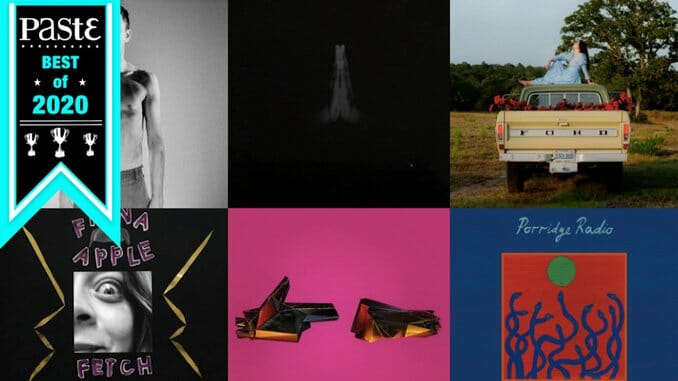
The year 2020 will be forever imprinted in our collective memory. Life as we knew it ceased to exist and so did live music. The income of independent musicians and venues was considerably slashed, threatening their survival, and album release schedules became uncertain. Fans flocked to online livestreams to watch their favorite artists perform, and an incalculable number of albums and songs were written, recorded and released during lockdown. An integral part of our culture hung (and still hangs) in the balance.
Most albums were eventually released as scheduled, but people began developing new listening habits. Fewer daily commutes meant fewer grimy yet cinematic subway rides with headphones on and fewer car rides in rush hour traffic with your favorite CDs. Given all the pain and precarity, some listeners reached for familiar musical comforts, while others listened to more new music then ever, whether to support struggling musicians or to keep their minds occupied with exciting discoveries and prevent the days from blending together. With no in-person live music to speak of, apart from largely downcast, socially distant events, fans were robbed of life-affirming memories, and artists who built up momentum didn’t get to experience the thrill of seeing their crowds grow on each consecutive tour stop. Without lively chatter at venues about favorite new music or shared physical experiences with those songs, does that music still exist? Obviously it does, but 2020 forced us to merely imagine the moments that make music feel most tangible.
This year in albums was one of profound surprise and dynamism. Fiona Apple broke her eight-year hiatus with one of the first classic albums of the decade—a release so visceral that you’ll remember where you were when you first heard it. Run The Jewels also put out a career highlight with their fourth LP, an album that sweltered in the background of an America torn apart by police violence. Breakout U.K. soul group Sault dropped a pair of albums that captured a similar revolutionary spirit via stories of Black hardship and excellence, and sounds from the rich Black diaspora. Bob Dylan released one of his best albums in years in Rough and Rowdy Ways, with his noticeably grizzled voice telling tales as amusing as any he’s ever written. It’s been a stark year and one that really had no business delivering as many great records as it did. We hope you’ll take this stroll down memory lane with us through a year of music unlike any other—by a landslide.
Listen to Paste’s Best Albums of 2020 playlist on Spotify here.
 50. Gum Country: SomewhereThere’s nothing better than a band fully aware of their sound—not in the sense of knowing their limitations, but knowing their strengths so well that they can deliver as many satisfying moments as possible. Courtney Garvin and Connor Mayer know they have you wrapped around their finger with the steamy self-described “harsh twee” of their new project Gum Country—or at least it sounds like they do. Pulling from noise, avant pop, college rock and classic indie, it’s clear they know their stuff. After all, this isn’t Garvin’s first indie-pop outing. She played lead guitar in The Courtneys, a Vancouver trio who released two full-length albums of fuzzy power pop—most recently 2017’s The Courtneys II. Drawing on Flying Nun bands like 3Ds and The Bats (as well as Sarah Records groups like Brighter and Heavenly), they fittingly found themselves releasing music for the classic Kiwi indie label as well. While The Courtneys’ sound is centered primarily on driving, harmony-laced indie pop, Gum Country push this sound even further on their debut LP Somewhere. Front and center, Garvin ramps up the fuzz, and Mayer adds eccentric synth flourishes—making for a sound that’s more mature, but as equally carefree as before. —Lizzie Manno
50. Gum Country: SomewhereThere’s nothing better than a band fully aware of their sound—not in the sense of knowing their limitations, but knowing their strengths so well that they can deliver as many satisfying moments as possible. Courtney Garvin and Connor Mayer know they have you wrapped around their finger with the steamy self-described “harsh twee” of their new project Gum Country—or at least it sounds like they do. Pulling from noise, avant pop, college rock and classic indie, it’s clear they know their stuff. After all, this isn’t Garvin’s first indie-pop outing. She played lead guitar in The Courtneys, a Vancouver trio who released two full-length albums of fuzzy power pop—most recently 2017’s The Courtneys II. Drawing on Flying Nun bands like 3Ds and The Bats (as well as Sarah Records groups like Brighter and Heavenly), they fittingly found themselves releasing music for the classic Kiwi indie label as well. While The Courtneys’ sound is centered primarily on driving, harmony-laced indie pop, Gum Country push this sound even further on their debut LP Somewhere. Front and center, Garvin ramps up the fuzz, and Mayer adds eccentric synth flourishes—making for a sound that’s more mature, but as equally carefree as before. —Lizzie Manno
 49. Ganser: Just Look at That SkyJust Look at That Sky is full of poetic recitations about maintaining one’s sanity while the world caves in. The Chicago outfit’s second album contains the wide-eyed glare and off-the-wall energy of someone who’s close to the final straw and searching for the best way to cope. Its on-edge nature is quelled by surreal humor and dark playfulness, though they leave plenty of room for existential spiraling, too. Meshing noise, art rock and post-punk, there’s a palpable sense of forward motion and doom, but it’s not a resigned doom—it’s a contemplative, purposeful doom that wouldn’t dare waste space on nihilism. —Lizzie Manno
49. Ganser: Just Look at That SkyJust Look at That Sky is full of poetic recitations about maintaining one’s sanity while the world caves in. The Chicago outfit’s second album contains the wide-eyed glare and off-the-wall energy of someone who’s close to the final straw and searching for the best way to cope. Its on-edge nature is quelled by surreal humor and dark playfulness, though they leave plenty of room for existential spiraling, too. Meshing noise, art rock and post-punk, there’s a palpable sense of forward motion and doom, but it’s not a resigned doom—it’s a contemplative, purposeful doom that wouldn’t dare waste space on nihilism. —Lizzie Manno
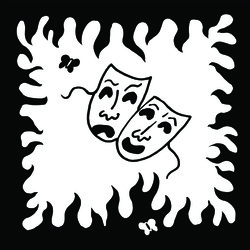 48. Dehd: Flower of DevotionThe twin masks of tragedy and comedy peering from the cover of Dehd’s third album are a fitting emblem of the band’s new songs themselves. On Flower of Devotion, the Chicago trio’s second Fire Talk full-length, songwriters Emily Kempf (bass) and Jason Balla (guitar), joined by drummer Eric McGrady, devote themselves to the sort of polarity symbolized by the so-called “sock and buskin”—joy and suffering, coming together and falling apart, bitter ends and new beginnings. They ride these emotional and existential seesaws throughout the record, rendering their efforts to hang on tight with both blunt candor and tongue-in-cheek humor. The result is Dehd’s best album to date, a significant upgrade on their sound that finds their Windy City DIY scene-honed amalgam of surf rock, shoegaze and dream pop at its most melodic and expressive. The trio demonstrate newfound levels of intensity and focus on Flower of Devotion, leaving minimalism behind in favor of glossier compositions. —Scott Russell
48. Dehd: Flower of DevotionThe twin masks of tragedy and comedy peering from the cover of Dehd’s third album are a fitting emblem of the band’s new songs themselves. On Flower of Devotion, the Chicago trio’s second Fire Talk full-length, songwriters Emily Kempf (bass) and Jason Balla (guitar), joined by drummer Eric McGrady, devote themselves to the sort of polarity symbolized by the so-called “sock and buskin”—joy and suffering, coming together and falling apart, bitter ends and new beginnings. They ride these emotional and existential seesaws throughout the record, rendering their efforts to hang on tight with both blunt candor and tongue-in-cheek humor. The result is Dehd’s best album to date, a significant upgrade on their sound that finds their Windy City DIY scene-honed amalgam of surf rock, shoegaze and dream pop at its most melodic and expressive. The trio demonstrate newfound levels of intensity and focus on Flower of Devotion, leaving minimalism behind in favor of glossier compositions. —Scott Russell
 47. Lianne La Havas: Lianne La HavasIt’s been five years since London singer/songwriter Lianne La Havas released an album, but it was worth the wait. Her self-titled album is a masterful cross-stitching of modern soul and classic R&B with folk touches, all marked by her sublime, airy vocals. Her voice cascades with such ease, and the gorgeous trembles are plentiful. On the surface, you get the breezy elegance of her voice, but listen more closely and her nimble guitar playing and unorthodox chords reveal themselves, rewarding repeat listeners. La Havas describes her relationships and predicaments with a certain worldliness—she embraces her mistakes, employs subtle humor, has learned to not give too much of herself away, and above all else, continues to seek hope and love, even when they elude her. It’s the perfect refined afternoon or evening album, and satisfying to optimists and pessimists alike. —Lizzie Manno
47. Lianne La Havas: Lianne La HavasIt’s been five years since London singer/songwriter Lianne La Havas released an album, but it was worth the wait. Her self-titled album is a masterful cross-stitching of modern soul and classic R&B with folk touches, all marked by her sublime, airy vocals. Her voice cascades with such ease, and the gorgeous trembles are plentiful. On the surface, you get the breezy elegance of her voice, but listen more closely and her nimble guitar playing and unorthodox chords reveal themselves, rewarding repeat listeners. La Havas describes her relationships and predicaments with a certain worldliness—she embraces her mistakes, employs subtle humor, has learned to not give too much of herself away, and above all else, continues to seek hope and love, even when they elude her. It’s the perfect refined afternoon or evening album, and satisfying to optimists and pessimists alike. —Lizzie Manno
 46. Catholic Action: Celebrated By StrangersIt’s not very zeitgeisty for bands to unironically shred these days. It’s a welcome shakeup when bands revolt against the simplistic, reverb-drenched plucks that characterize much of the popular indie world—as long as they’re not swapping them for something much worse, like insufferable classic-rock revivalism or the radio-rock wasteland of “whoa-oh-oh’s,” embodied by bands like Imagine Dragons or Bastille. Glasgow’s Catholic Action are a case study in how to subvert those conventions while simultaneously making something seemingly fresh. They stitch together pop, punk, indie, glam and garage rock, always with bold guitars at the center, but most crucially, there’s a contagious bounciness to their music. The four-piece band released their debut album, In Memory Of, back in 2017, and it was a frequently amusing, occasionally dark collection of hopped-up pop songs with knobby guitar tones. It was also one of those records that made you remember what it was like to actually hear irresistibly hummable basslines in guitar songs that are decidedly not funky indie-pop or stark post-punk. On their 2020 follow-up Celebrated By Strangers, the four-piece, led by singer, guitarist and producer Chris McCrory, are firing on all cylinders again, and ready to remind you that guitar solos still rule—if they’re as interesting and well-executed as these, that is. While their debut album delivered its fair share of peculiarities, Celebrated By Strangers is peppered with even more moments of unexpected zest. —Lizzie Manno
46. Catholic Action: Celebrated By StrangersIt’s not very zeitgeisty for bands to unironically shred these days. It’s a welcome shakeup when bands revolt against the simplistic, reverb-drenched plucks that characterize much of the popular indie world—as long as they’re not swapping them for something much worse, like insufferable classic-rock revivalism or the radio-rock wasteland of “whoa-oh-oh’s,” embodied by bands like Imagine Dragons or Bastille. Glasgow’s Catholic Action are a case study in how to subvert those conventions while simultaneously making something seemingly fresh. They stitch together pop, punk, indie, glam and garage rock, always with bold guitars at the center, but most crucially, there’s a contagious bounciness to their music. The four-piece band released their debut album, In Memory Of, back in 2017, and it was a frequently amusing, occasionally dark collection of hopped-up pop songs with knobby guitar tones. It was also one of those records that made you remember what it was like to actually hear irresistibly hummable basslines in guitar songs that are decidedly not funky indie-pop or stark post-punk. On their 2020 follow-up Celebrated By Strangers, the four-piece, led by singer, guitarist and producer Chris McCrory, are firing on all cylinders again, and ready to remind you that guitar solos still rule—if they’re as interesting and well-executed as these, that is. While their debut album delivered its fair share of peculiarities, Celebrated By Strangers is peppered with even more moments of unexpected zest. —Lizzie Manno
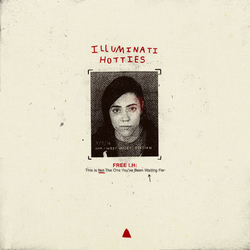 45. Illuminati Hotties: FREE I.H.: This Is Not The One You’ve Been Waiting ForEarlier this year, artists like Lucy Dacus, PUP and Sadie Dupuis of Speedy Ortiz shared a SoundCloud link to a self-titled album by a band called Occult Classic. With a solid black album cover and no credits to be found, buzz about the album started to swirl on social media—though that probably wouldn’t have happened if the album wasn’t so mind-numbingly good. Fans immediately began to speculate about whether this was a supergroup whose members included the indie artists tweeting the link, but a close ear would tell you that Sarah Tudzin of Illuminati Hotties is indeed on lead vocals, later spelling out her band name several times on track seven “Content / Bedtime.” It was later confirmed as a new Illuminati Hotties mixtape, and it’s a big step up from their 2018 debut Kiss Yr Frenemies. It’s bolder, punkier and has some of the best rock hooks in recent memory. On their 12 songs (with goofy, lowercase track titles) and less than half-hour run time, you’ll hear tinges of phat electro-rock, invigorating riot grrrl and delectable twee-pop. —Lizzie Manno
45. Illuminati Hotties: FREE I.H.: This Is Not The One You’ve Been Waiting ForEarlier this year, artists like Lucy Dacus, PUP and Sadie Dupuis of Speedy Ortiz shared a SoundCloud link to a self-titled album by a band called Occult Classic. With a solid black album cover and no credits to be found, buzz about the album started to swirl on social media—though that probably wouldn’t have happened if the album wasn’t so mind-numbingly good. Fans immediately began to speculate about whether this was a supergroup whose members included the indie artists tweeting the link, but a close ear would tell you that Sarah Tudzin of Illuminati Hotties is indeed on lead vocals, later spelling out her band name several times on track seven “Content / Bedtime.” It was later confirmed as a new Illuminati Hotties mixtape, and it’s a big step up from their 2018 debut Kiss Yr Frenemies. It’s bolder, punkier and has some of the best rock hooks in recent memory. On their 12 songs (with goofy, lowercase track titles) and less than half-hour run time, you’ll hear tinges of phat electro-rock, invigorating riot grrrl and delectable twee-pop. —Lizzie Manno
 44. KeiyaA: Forever, Ya GirlKeiyaA’s debut album has a certain rawness that permeates whatever space in which you choose to listen to it. Her lo-fi R&B is marked by refined vocals, defiant spoken-word and spacious backdrops. Its celebration of Blackness is jubilant, and it’s also a candid examination of the self, both alone and in the presence of those who’ve wronged her. Songs like “I Want My Things” fuse these themes with wisdom and grit (“I’m wrestled with conflicts centered on topics of liberation / I’m riddled with demons, it’s time to release them once and for all / I’m dealing with burdens I never deserved, yet I’m responsible / The wheels gone keep turning, and Imma keep burning, so baby roll up”). KeiyaA stresses the importance of self-preservation via mature rumination and blissful relaxation, and her thought-provoking yet understated instrumentals are an invitation for listeners to engage in those practices, as well. —Lizzie Manno
44. KeiyaA: Forever, Ya GirlKeiyaA’s debut album has a certain rawness that permeates whatever space in which you choose to listen to it. Her lo-fi R&B is marked by refined vocals, defiant spoken-word and spacious backdrops. Its celebration of Blackness is jubilant, and it’s also a candid examination of the self, both alone and in the presence of those who’ve wronged her. Songs like “I Want My Things” fuse these themes with wisdom and grit (“I’m wrestled with conflicts centered on topics of liberation / I’m riddled with demons, it’s time to release them once and for all / I’m dealing with burdens I never deserved, yet I’m responsible / The wheels gone keep turning, and Imma keep burning, so baby roll up”). KeiyaA stresses the importance of self-preservation via mature rumination and blissful relaxation, and her thought-provoking yet understated instrumentals are an invitation for listeners to engage in those practices, as well. —Lizzie Manno
 43. Samia: The Baby“I only write songs about things that I’m scared of,” Samia Finnerty sings on the final track of her debut album The Baby. Finnerty, who records under her first name, maps these fears with such precision and openness that her songs will feel just as much a part of your world as they are hers. This 20-something singer/songwriter fills her songs with minute details and impassioned memories, each one plucked with a distinct purpose, whether it’s symbolism, humor or painful intimacy. One of her early songs, “Milk,” tracked her simultaneous battle with grief (“Goodnight to my namesake”) and an eating disorder (“I’m in the bathroom seeing how far my two fingers can fit around my thigh”), while another titled “The Night Josh Tillman Listened to My Song” imagined a disappointing encounter with one of her songwriting inspirations, Father John Misty. Like most of us, Finnerty has many fears, but a fear of vulnerability isn’t one of them. Her first full-length The Baby is intimate to the point where her feelings become your feelings. Samia not only identifies her fears, but also sprints towards them, searching for the source, the ways they manifest in reality and underlying lessons to be learned. Samia thrives on acuity and passion, which very well could carry her through a long, impactful career. —Lizzie Manno
43. Samia: The Baby“I only write songs about things that I’m scared of,” Samia Finnerty sings on the final track of her debut album The Baby. Finnerty, who records under her first name, maps these fears with such precision and openness that her songs will feel just as much a part of your world as they are hers. This 20-something singer/songwriter fills her songs with minute details and impassioned memories, each one plucked with a distinct purpose, whether it’s symbolism, humor or painful intimacy. One of her early songs, “Milk,” tracked her simultaneous battle with grief (“Goodnight to my namesake”) and an eating disorder (“I’m in the bathroom seeing how far my two fingers can fit around my thigh”), while another titled “The Night Josh Tillman Listened to My Song” imagined a disappointing encounter with one of her songwriting inspirations, Father John Misty. Like most of us, Finnerty has many fears, but a fear of vulnerability isn’t one of them. Her first full-length The Baby is intimate to the point where her feelings become your feelings. Samia not only identifies her fears, but also sprints towards them, searching for the source, the ways they manifest in reality and underlying lessons to be learned. Samia thrives on acuity and passion, which very well could carry her through a long, impactful career. —Lizzie Manno
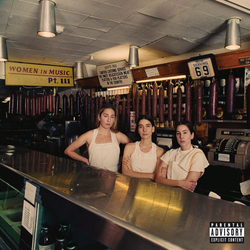 42. HAIM: Women in Music Pt. IIIDanielle Haim begins the third HAIM LP by bemoaning the city that built them. “Los Angeles, give me a miracle,” she sings after a flurry of saxophone starts the song. “I just want out from this.” She continues into the chorus as her sisters Alana and Este join in on backup, singing “These days I can’t win.” The City of Angels is also the city of sweaty, broken dreams, as any struggling actor, screenwriter or regular-person-stuck-in-traffic can tell you. Even Danielle—primary songwriter for the trio—who was born, raised and primed for rock stardom in the sprawling city, clearly can’t stand it some days. Danielle’s depression, which she has attributed to the struggles she and her partner/producer Ariel Rechtshaid faced upon his testicular cancer diagnosis in 2016, informs some of WIMPIII’s most specific and heartfelt lyrics. But her sisters’ struggles are just as important. Alana remembers her best friend who passed away at 20, while Este’s life has been full of ups and downs since her Type 1 diabetes diagnosis during her freshman year of high school. They all lean on each other, and that love is perhaps loudest in stirring folk number “Hallelujah.” Though outwardly carefree, WIMPIII finds HAIM exploring darker and more serious matters than ever before, which is one reason why it’s their most complete and forward-thinking release yet. Many of these songs find Danielle, Alana and Este flat on their backs, but it’s never long before they’ve returned to their default position: upright, strutting confidently through the streets of L.A. and life itself. —Ellen Johnson
42. HAIM: Women in Music Pt. IIIDanielle Haim begins the third HAIM LP by bemoaning the city that built them. “Los Angeles, give me a miracle,” she sings after a flurry of saxophone starts the song. “I just want out from this.” She continues into the chorus as her sisters Alana and Este join in on backup, singing “These days I can’t win.” The City of Angels is also the city of sweaty, broken dreams, as any struggling actor, screenwriter or regular-person-stuck-in-traffic can tell you. Even Danielle—primary songwriter for the trio—who was born, raised and primed for rock stardom in the sprawling city, clearly can’t stand it some days. Danielle’s depression, which she has attributed to the struggles she and her partner/producer Ariel Rechtshaid faced upon his testicular cancer diagnosis in 2016, informs some of WIMPIII’s most specific and heartfelt lyrics. But her sisters’ struggles are just as important. Alana remembers her best friend who passed away at 20, while Este’s life has been full of ups and downs since her Type 1 diabetes diagnosis during her freshman year of high school. They all lean on each other, and that love is perhaps loudest in stirring folk number “Hallelujah.” Though outwardly carefree, WIMPIII finds HAIM exploring darker and more serious matters than ever before, which is one reason why it’s their most complete and forward-thinking release yet. Many of these songs find Danielle, Alana and Este flat on their backs, but it’s never long before they’ve returned to their default position: upright, strutting confidently through the streets of L.A. and life itself. —Ellen Johnson
 41. Nation of Language: Introduction, PresenceIt’s no secret that 1980s nostalgia has been prevalent in indie rock for years now. From Future Islands and Interpol to The 1975 and TOPS, countless bands from the last two decades have found success filtering their music through distinctly ’80s lenses. Still to this day, you can hardly swing a dead cat without hitting an indie band with one or more of these elements: interstellar synths, bass-driven songs, rich production and melodramatic vocals. To join these ranks is both a blessing and a curse. On one hand, there’s a huge demand for music that sounds like it came from the era of big hair and goths, but on the other hand, it’s hard to stand out in such a saturated market—and even harder to make lasting, impactful songs that transcend its revivalist label. New York City band Nation of Language approach this weighty task with more grace and far better songwriting chops than the vast majority of bands who attempt retro pastiches or something close to them. For starters, lead singer and songwriter Ian Devaney (formerly of Static Jacks) has a low-pitched, aching voice that just screams classic new wave, but more crucially, he has an ear for awe-inspiring melodies and synth lines that go above and beyond mere cinematic uplift. Nearly every one of his songs prompts a mental highlight reel of one’s own life, but without the stylish, candy-coated nostalgia that’s fetishized nowadays—it’s the profound kind that allows you to view yourself at your lowest and highest moments and see the beauty in having a finite amount of time to live. —Lizzie Manno
41. Nation of Language: Introduction, PresenceIt’s no secret that 1980s nostalgia has been prevalent in indie rock for years now. From Future Islands and Interpol to The 1975 and TOPS, countless bands from the last two decades have found success filtering their music through distinctly ’80s lenses. Still to this day, you can hardly swing a dead cat without hitting an indie band with one or more of these elements: interstellar synths, bass-driven songs, rich production and melodramatic vocals. To join these ranks is both a blessing and a curse. On one hand, there’s a huge demand for music that sounds like it came from the era of big hair and goths, but on the other hand, it’s hard to stand out in such a saturated market—and even harder to make lasting, impactful songs that transcend its revivalist label. New York City band Nation of Language approach this weighty task with more grace and far better songwriting chops than the vast majority of bands who attempt retro pastiches or something close to them. For starters, lead singer and songwriter Ian Devaney (formerly of Static Jacks) has a low-pitched, aching voice that just screams classic new wave, but more crucially, he has an ear for awe-inspiring melodies and synth lines that go above and beyond mere cinematic uplift. Nearly every one of his songs prompts a mental highlight reel of one’s own life, but without the stylish, candy-coated nostalgia that’s fetishized nowadays—it’s the profound kind that allows you to view yourself at your lowest and highest moments and see the beauty in having a finite amount of time to live. —Lizzie Manno
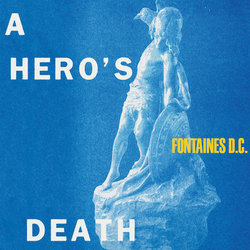 40. Fontaines D.C.: A Hero’s DeathLast year, five Irish 20-somethings became one of the most exciting rock bands on the planet. Their debut album Dogrel opened with a cymbal-clattering tune that repeatedly pontificated, “My childhood was small, but I’m gonna be big!” Though rock bands occasionally work their way up the industry ladder in a similar manner, not many also do so with universal critical acclaim. Fontaines D.C. received widespread praise and a Mercury Prize nomination for their gritty yet uplifting, literary-inspired rock tunes, which spanned post-punk, surf and classic rock ‘n’ roll. Quickly after Dogrel’s release, they began work on its follow-up A Hero’s Death. It’s hard for rock bands to build up the same amount of attention for their second albums, especially with a group that embraces styles of the past, but Fontaines D.C. chose an approach that many artists would find unthinkable—they deliberately attempted to destroy listeners’ original impression of the band. Fontaines D.C. sound far gloomier, both sonically and lyrically, but also more mature and pointed. Their gothic tendencies are heightened, and new reference points are introduced: Pet Sounds-era Beach Boys, Scott Walker and Leonard Cohen. You won’t find the giddy clamor of “Boys in the Better Land” or invigorating singalongs like “Sha Sha Sha”—instead, the average song pace is much slower, and they’re not as amused by observational poetry. A Hero’s Death is a reclamation of their identity as a band—after all, the refrain on the opening track is “I don’t belong to anyone.” —Lizzie Manno
40. Fontaines D.C.: A Hero’s DeathLast year, five Irish 20-somethings became one of the most exciting rock bands on the planet. Their debut album Dogrel opened with a cymbal-clattering tune that repeatedly pontificated, “My childhood was small, but I’m gonna be big!” Though rock bands occasionally work their way up the industry ladder in a similar manner, not many also do so with universal critical acclaim. Fontaines D.C. received widespread praise and a Mercury Prize nomination for their gritty yet uplifting, literary-inspired rock tunes, which spanned post-punk, surf and classic rock ‘n’ roll. Quickly after Dogrel’s release, they began work on its follow-up A Hero’s Death. It’s hard for rock bands to build up the same amount of attention for their second albums, especially with a group that embraces styles of the past, but Fontaines D.C. chose an approach that many artists would find unthinkable—they deliberately attempted to destroy listeners’ original impression of the band. Fontaines D.C. sound far gloomier, both sonically and lyrically, but also more mature and pointed. Their gothic tendencies are heightened, and new reference points are introduced: Pet Sounds-era Beach Boys, Scott Walker and Leonard Cohen. You won’t find the giddy clamor of “Boys in the Better Land” or invigorating singalongs like “Sha Sha Sha”—instead, the average song pace is much slower, and they’re not as amused by observational poetry. A Hero’s Death is a reclamation of their identity as a band—after all, the refrain on the opening track is “I don’t belong to anyone.” —Lizzie Manno
 39. Jessie Ware: What’s Your Pleasure?In these reflective, soul-searching post-pandemic times, there are some musical tones that dance-pop diva Jessie Ware has been looking back on with an unusual degree of fondness. The rubbery, ’80s-retro synthesizer textures of some of the material on her new fourth outing What’s Your Pleasure?, for instance, like the New Order-ish “Soul Control,” a Chic-funky “Ooh La La,” the “Beverly Hills Cop”-elastic “Read My Lips,” and a decidedly ABBA-reminiscent title track. “I love those kinds of vintage sounds that you could say sound like cheese,” says the sultry British artist, who also co-hosts a popular food-themed podcast with her mother Lennie called Table Manners. “But I like the brashness, the flirtation of those sounds—they’re fun, and they really pack a punch. I wanted all of that for this record—I was greedy!” —Tom Lanham
39. Jessie Ware: What’s Your Pleasure?In these reflective, soul-searching post-pandemic times, there are some musical tones that dance-pop diva Jessie Ware has been looking back on with an unusual degree of fondness. The rubbery, ’80s-retro synthesizer textures of some of the material on her new fourth outing What’s Your Pleasure?, for instance, like the New Order-ish “Soul Control,” a Chic-funky “Ooh La La,” the “Beverly Hills Cop”-elastic “Read My Lips,” and a decidedly ABBA-reminiscent title track. “I love those kinds of vintage sounds that you could say sound like cheese,” says the sultry British artist, who also co-hosts a popular food-themed podcast with her mother Lennie called Table Manners. “But I like the brashness, the flirtation of those sounds—they’re fun, and they really pack a punch. I wanted all of that for this record—I was greedy!” —Tom Lanham
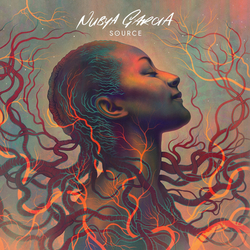 38. Nubya Garcia: SourceAs far as musical subcultures go, few have yielded as many alluring recent discoveries as the emerging London jazz scene. Much like when Kamasi Washington, Thundercat and their Los Angeles-based West Coast Get Down cohort thrusted their indelible body of work into international consciousness in the mid-2010s, there’s now a similarly bonded (but younger) community of musicians emanating from London, poised to make breakouts both inside and out of the boundaries of traditional jazz music. The days of this music being solely confined to the smoky, white tablecloth-set jazz club are behind us. Hip-hop and electronic influences are increasingly prevalent in the London scene, as they collide with jazz and traditional African music. Through Londoners like Mercury Music Prize-nominated drummer Moses Boyd, convention-shattering tuba player Theon Cross, Afrobeat collective KOKOROKO and Jazz FM’s reigning U.K. Jazz Act of the Year saxophonist Nubya Garcia, jazz is tapping into its roots of counterculture expression and galvanizing modern fan bases. Vinyl pressings across the board are selling out, and now, people are actually dancing at jazz shows (or were when we could still enjoy such things, obviously). Source is a reminder of how exciting jazz can be, but it’s almost as if Garcia intended it to mirror the precipitously hurried lifestyle many of us lead in cities and beyond. At 28, Garcia is doing her part to open the floodgates of U.K. jazz back up and illuminate the roots of the music and herself. —Adrian Spinelli
38. Nubya Garcia: SourceAs far as musical subcultures go, few have yielded as many alluring recent discoveries as the emerging London jazz scene. Much like when Kamasi Washington, Thundercat and their Los Angeles-based West Coast Get Down cohort thrusted their indelible body of work into international consciousness in the mid-2010s, there’s now a similarly bonded (but younger) community of musicians emanating from London, poised to make breakouts both inside and out of the boundaries of traditional jazz music. The days of this music being solely confined to the smoky, white tablecloth-set jazz club are behind us. Hip-hop and electronic influences are increasingly prevalent in the London scene, as they collide with jazz and traditional African music. Through Londoners like Mercury Music Prize-nominated drummer Moses Boyd, convention-shattering tuba player Theon Cross, Afrobeat collective KOKOROKO and Jazz FM’s reigning U.K. Jazz Act of the Year saxophonist Nubya Garcia, jazz is tapping into its roots of counterculture expression and galvanizing modern fan bases. Vinyl pressings across the board are selling out, and now, people are actually dancing at jazz shows (or were when we could still enjoy such things, obviously). Source is a reminder of how exciting jazz can be, but it’s almost as if Garcia intended it to mirror the precipitously hurried lifestyle many of us lead in cities and beyond. At 28, Garcia is doing her part to open the floodgates of U.K. jazz back up and illuminate the roots of the music and herself. —Adrian Spinelli
 37. Cafe Racer: Shadow TalkSome psychedelic albums reach a hypnotic end cheaply. But Shadow Talk, the second album from Chicago experimental five-piece Cafe Racer, reaches heady emotional and sonic heights, not by leaning on overused effects or sprinkling meaningless, abstract imagery, but by expecting more out of a song and its lyrics. Shadow Talk is all about finesse and dynamics—melodies cascade with subtlety and spark with a euphoric glow. They’re also masters of grooves both meditative and invigorating, and they experiment with foreground and background sounds in mind-numbing ways. It’s an extremely calming album until it isn’t—the guitar and synth fury on “Faces” is life-affirming, the guitar solo in “Exile” is painfully emotive and its subsequent outro track creates blistering, ambient havoc. It’s a moody, empathetic album, bolstered by repetition and the palpable scenes they create, whether that’s an imagined, heavenly gorge or the melancholy urban landscapes you traverse every day. —Lizzie Manno
37. Cafe Racer: Shadow TalkSome psychedelic albums reach a hypnotic end cheaply. But Shadow Talk, the second album from Chicago experimental five-piece Cafe Racer, reaches heady emotional and sonic heights, not by leaning on overused effects or sprinkling meaningless, abstract imagery, but by expecting more out of a song and its lyrics. Shadow Talk is all about finesse and dynamics—melodies cascade with subtlety and spark with a euphoric glow. They’re also masters of grooves both meditative and invigorating, and they experiment with foreground and background sounds in mind-numbing ways. It’s an extremely calming album until it isn’t—the guitar and synth fury on “Faces” is life-affirming, the guitar solo in “Exile” is painfully emotive and its subsequent outro track creates blistering, ambient havoc. It’s a moody, empathetic album, bolstered by repetition and the palpable scenes they create, whether that’s an imagined, heavenly gorge or the melancholy urban landscapes you traverse every day. —Lizzie Manno
 36. Bartees Strange: Live ForeverWe live in an era when intersectionality is either fiercely celebrated or rejected, and Spotify playlists are the norm—especially for young music listeners. These conditions are perfect for an album like Live Forever by Bartees Strange, a Brooklyn musician whose work is a tapestry of traditions, ideas and sounds. Strange throws curveballs throughout Live Forever’s 11 tracks, but they never seem out of place. Atmospheric soul bookends the album, a style in which Strange excels, but there’s plenty to be surprised and delighted by in between. Promo singles “Mustang” and “Boomer” harness a visceral power, with the former diving into hooky synth-rock and sweltering punk, and the latter dishing out hip-hop verses and giddy blues-rock. Only three tracks in, it’s obvious that Strange’s good-natured charisma and vocal warmth are something special. You can hear the rootsy blues of Black Pumas, the genre-hopping grandeur and vocal dynamism of Moses Sumney, the Southern-rock cadence of Kings of Leon and the punky explosiveness of At The Drive In—and that’s only the beginning of Strange’s reference points. —Lizzie Manno
36. Bartees Strange: Live ForeverWe live in an era when intersectionality is either fiercely celebrated or rejected, and Spotify playlists are the norm—especially for young music listeners. These conditions are perfect for an album like Live Forever by Bartees Strange, a Brooklyn musician whose work is a tapestry of traditions, ideas and sounds. Strange throws curveballs throughout Live Forever’s 11 tracks, but they never seem out of place. Atmospheric soul bookends the album, a style in which Strange excels, but there’s plenty to be surprised and delighted by in between. Promo singles “Mustang” and “Boomer” harness a visceral power, with the former diving into hooky synth-rock and sweltering punk, and the latter dishing out hip-hop verses and giddy blues-rock. Only three tracks in, it’s obvious that Strange’s good-natured charisma and vocal warmth are something special. You can hear the rootsy blues of Black Pumas, the genre-hopping grandeur and vocal dynamism of Moses Sumney, the Southern-rock cadence of Kings of Leon and the punky explosiveness of At The Drive In—and that’s only the beginning of Strange’s reference points. —Lizzie Manno
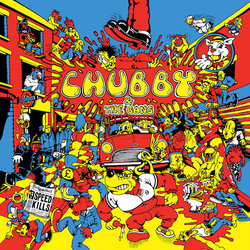 35. Chubby and the Gang: Speed KillsChubby and The Gang’s debut LP, Speed Kills, was released via independent British hardcore label Static Shock back in January, and critics raved about it, coming to a similar consensus that its hopped-up punk-pop is impossibly punchy and ridiculously fun. Charlie Manning-Walker and his fellow bandmates are all hardcore veterans—having played in bands like Violent Reaction, Abolition, Guidance and Gutter Knife—but somehow they’ve made one of the strongest stitchings of pub rock, classic pop, surf and punk in recent memory. “Chubby and The Gang Rule OK?” is both a statement of fact and their unruly lead album track that takes about 30 seconds to convince you that their breakneck rhythms and pop chops are the real deal. Like its colorful, cartoonish album cover, the album celebrates the vast characters of working-class London: the dubious, fun-loving rascals, the crass authority figures, the squares and the reckless brutes. But more than anything, Speed Kills is an ode to the “gang,” the fiercely loyal one that finds you when you’re young and makes grim circumstances much more bearable. —Lizzie Manno
35. Chubby and the Gang: Speed KillsChubby and The Gang’s debut LP, Speed Kills, was released via independent British hardcore label Static Shock back in January, and critics raved about it, coming to a similar consensus that its hopped-up punk-pop is impossibly punchy and ridiculously fun. Charlie Manning-Walker and his fellow bandmates are all hardcore veterans—having played in bands like Violent Reaction, Abolition, Guidance and Gutter Knife—but somehow they’ve made one of the strongest stitchings of pub rock, classic pop, surf and punk in recent memory. “Chubby and The Gang Rule OK?” is both a statement of fact and their unruly lead album track that takes about 30 seconds to convince you that their breakneck rhythms and pop chops are the real deal. Like its colorful, cartoonish album cover, the album celebrates the vast characters of working-class London: the dubious, fun-loving rascals, the crass authority figures, the squares and the reckless brutes. But more than anything, Speed Kills is an ode to the “gang,” the fiercely loyal one that finds you when you’re young and makes grim circumstances much more bearable. —Lizzie Manno
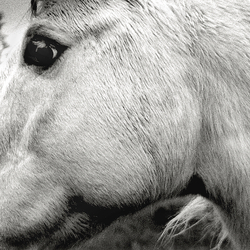 34. Bonny Light Horseman: Bonny Light HorsemanIf you Google “oldest known musical instrument,” you’ll find that the answer is the flute: 42,000-year-old fragments of the instrument carved from bird bone and mammoth ivory were discovered in a German cave a decade ago. But the cheekier, less scientific answer to that query is the human voice. It makes logical sense: As long as there have been humans, they’ve surely used their voices to sing. In other words, it’s not just the material that’s timeless on the new self-titled album from folk supergroup Bonny Light Horseman. It’s the voices—of decorated singer/songwriter Anaïs Mitchell and Fruit Bats leader Eric D. Johnson, especially—that make Bonny Light Horseman more than just another rehash of traditional songs. The trio, which also includes multi-instrumentalist Josh Kaufman (The National, Josh Ritter), came together during two 2018 festivals connected to Bon Iver’s Justin Vernon and The National’s Aaron Dessner—Eaux Claires in Wisconsin and the 37d03d Festival in Berlin. There, Mitchell, Johnson and Kaufman zeroed in on their goal: to give ancient songs a contemporary twist, and to surround the timeless feelings expressed in those songs with drop-dead gorgeous string and vocal arrangements. —Ben Salmon
34. Bonny Light Horseman: Bonny Light HorsemanIf you Google “oldest known musical instrument,” you’ll find that the answer is the flute: 42,000-year-old fragments of the instrument carved from bird bone and mammoth ivory were discovered in a German cave a decade ago. But the cheekier, less scientific answer to that query is the human voice. It makes logical sense: As long as there have been humans, they’ve surely used their voices to sing. In other words, it’s not just the material that’s timeless on the new self-titled album from folk supergroup Bonny Light Horseman. It’s the voices—of decorated singer/songwriter Anaïs Mitchell and Fruit Bats leader Eric D. Johnson, especially—that make Bonny Light Horseman more than just another rehash of traditional songs. The trio, which also includes multi-instrumentalist Josh Kaufman (The National, Josh Ritter), came together during two 2018 festivals connected to Bon Iver’s Justin Vernon and The National’s Aaron Dessner—Eaux Claires in Wisconsin and the 37d03d Festival in Berlin. There, Mitchell, Johnson and Kaufman zeroed in on their goal: to give ancient songs a contemporary twist, and to surround the timeless feelings expressed in those songs with drop-dead gorgeous string and vocal arrangements. —Ben Salmon
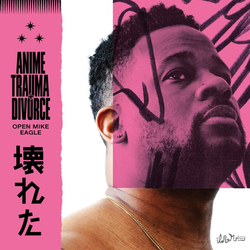 33. Open Mike Eagle: Anime, Trauma and DivorceOpen Mike Eagle’s Anime, Trauma and Divorce is teeming with anguish and rumination, all underpinned by his nimble wordplay, rich vocals and clear enunciations. It’s peppered with artful textures and a relaxed pace—a perfect frame for his sharp lyricism. According to Eagle, the album is about a time when “the world went to shit [but] I was already in the middle of a few personal crisis,” and you can hear those explorations of micro and macro turmoil. His lyrical references are second to none, lending nods to The Breeders, X-Men, Peter Dinklage, the ‘93 Bulls, masked wrestlers, and anime like JoJo’s Bizarre Adventure and Neon Genesis Evangelion. His personal conundrums are also extremely rooted in the times, like his desperate turn to self-care (“Wtf is Self Care”) and the cracks of his real-life marriage revealing themselves while watching an episode of Black Mirror (“The Black Mirror Episode”). —Lizzie Manno
33. Open Mike Eagle: Anime, Trauma and DivorceOpen Mike Eagle’s Anime, Trauma and Divorce is teeming with anguish and rumination, all underpinned by his nimble wordplay, rich vocals and clear enunciations. It’s peppered with artful textures and a relaxed pace—a perfect frame for his sharp lyricism. According to Eagle, the album is about a time when “the world went to shit [but] I was already in the middle of a few personal crisis,” and you can hear those explorations of micro and macro turmoil. His lyrical references are second to none, lending nods to The Breeders, X-Men, Peter Dinklage, the ‘93 Bulls, masked wrestlers, and anime like JoJo’s Bizarre Adventure and Neon Genesis Evangelion. His personal conundrums are also extremely rooted in the times, like his desperate turn to self-care (“Wtf is Self Care”) and the cracks of his real-life marriage revealing themselves while watching an episode of Black Mirror (“The Black Mirror Episode”). —Lizzie Manno
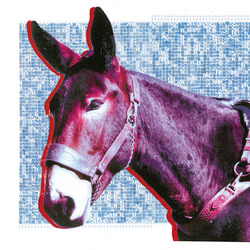 32. Protomartyr: Ultimate Success Today“Dull ache turned sharp / Short breath, never caught,” Joe Casey repeats through the closing minute of “Day Without End,” his voice turning from detachment to anger, struggling above the hammering drums, guitars and horns as they remain largely unchanged except in their steadily building, brutally indifferent noise. This begins Protomartyr’s fifth album, Ultimate Success Today, and in many respects encapsulates the mission of the Detroit post-punk veterans’ music. From their first LP No Passion All Technique to their latest release especially, Protomartyr have had a preoccupation with failure, the volcanic eruption of small, petty lives confronting the overwhelming forces, both external and internal, that bind them to their insignificance and vice versa. Ultimate Success Today places that theme on an apocalyptic and disturbingly prescient scale. These tracks paint sketches of authoritarianism creeping dully into everyday life, soulless populism rooting its way into confused masses, animals trapped between choosing death or the pain that comes with surviving, and above all, the illusory promise of success in a world collapsing in on itself. It is, to put it lightly, not a happy world for Protomartyr. —Jack Meyer
32. Protomartyr: Ultimate Success Today“Dull ache turned sharp / Short breath, never caught,” Joe Casey repeats through the closing minute of “Day Without End,” his voice turning from detachment to anger, struggling above the hammering drums, guitars and horns as they remain largely unchanged except in their steadily building, brutally indifferent noise. This begins Protomartyr’s fifth album, Ultimate Success Today, and in many respects encapsulates the mission of the Detroit post-punk veterans’ music. From their first LP No Passion All Technique to their latest release especially, Protomartyr have had a preoccupation with failure, the volcanic eruption of small, petty lives confronting the overwhelming forces, both external and internal, that bind them to their insignificance and vice versa. Ultimate Success Today places that theme on an apocalyptic and disturbingly prescient scale. These tracks paint sketches of authoritarianism creeping dully into everyday life, soulless populism rooting its way into confused masses, animals trapped between choosing death or the pain that comes with surviving, and above all, the illusory promise of success in a world collapsing in on itself. It is, to put it lightly, not a happy world for Protomartyr. —Jack Meyer
 31. Ela Minus: acts of rebellionAs 2018 ended and 2019 began, Ela Minus was putting the finishing touches on what would become the most prescient song of 2020. “We’re afraid we’ll run out of time / To stand up for our rights / You won’t make us stop,” the Brooklyn-via-Bogotá synth savant murmurs invitingly on “megapunk,” which finds a brooding-then-explosive middle ground between New Order and Aphex Twin. Before the song’s final chorus, she becomes even more direct: “You’re choosing to lead us apart, but against all odds,” she warns, “you still won’t make us stop.” As the apex of an album released 11 days before the 2020 presidential election, “megapunk” couldn’t be more timely. It’s an uncompromising reminder that if the current president and his cronies attempt the coup they’re all but promising, we need to rise up even if we face threats of violence and jail. It’s also, as the second single and most thrashing entry on an album named acts of rebellion, something of a thesis statement. On her debut LP, Ela Minus explores the role of community in subverting both fascist governments and oppressive everyday expectations. It’s a prophetic, vital message, and it’s wrapped in some of the best electronic and pop music of the year. —Max Freedman
31. Ela Minus: acts of rebellionAs 2018 ended and 2019 began, Ela Minus was putting the finishing touches on what would become the most prescient song of 2020. “We’re afraid we’ll run out of time / To stand up for our rights / You won’t make us stop,” the Brooklyn-via-Bogotá synth savant murmurs invitingly on “megapunk,” which finds a brooding-then-explosive middle ground between New Order and Aphex Twin. Before the song’s final chorus, she becomes even more direct: “You’re choosing to lead us apart, but against all odds,” she warns, “you still won’t make us stop.” As the apex of an album released 11 days before the 2020 presidential election, “megapunk” couldn’t be more timely. It’s an uncompromising reminder that if the current president and his cronies attempt the coup they’re all but promising, we need to rise up even if we face threats of violence and jail. It’s also, as the second single and most thrashing entry on an album named acts of rebellion, something of a thesis statement. On her debut LP, Ela Minus explores the role of community in subverting both fascist governments and oppressive everyday expectations. It’s a prophetic, vital message, and it’s wrapped in some of the best electronic and pop music of the year. —Max Freedman
 30. Lido Pimienta: Miss ColombiaColombia-born and Toronto-based artist Lido Pimienta shared her second album Miss Colombia earlier this year via ANTI- Records. Pimienta won the Polaris Music Prize for her 2016 debut La Papessa (the first artist recording in a language other than English or French to take home the award), and her Polaris Prize-nominated (and Grammy-nominated) follow-up is even more ambitious. Mixing electro-pop, industrial and reggaeton music with cumbia rhythms, Miss Colombia is a fearless album about identity, resistance and pain. —Lizzie Manno
30. Lido Pimienta: Miss ColombiaColombia-born and Toronto-based artist Lido Pimienta shared her second album Miss Colombia earlier this year via ANTI- Records. Pimienta won the Polaris Music Prize for her 2016 debut La Papessa (the first artist recording in a language other than English or French to take home the award), and her Polaris Prize-nominated (and Grammy-nominated) follow-up is even more ambitious. Mixing electro-pop, industrial and reggaeton music with cumbia rhythms, Miss Colombia is a fearless album about identity, resistance and pain. —Lizzie Manno
 29. Thanya Iyer: KINDMusical genres don’t mean much in 2020. Artists nowadays are mixing trap with R&B, rap with metal, industrial rock with pop and so on. But mixing that disregard for stylistic categorizations with improvisation is a whole new ballgame. Montreal’s Thanya Iyer fit that bill perfectly—in that their music doesn’t fit neatly into anything. The band, led by the musician, composer, producer and bandleader of the same name, are hellbent on pushing the envelope and shifting the goalposts of what is possible. Their debut album, 2016’s Do You Dream?, was an ambitious swirl of classical, jazz, soul and electro-pop. In their world, instruments like toy piano, saxophone, harp and even “dried clementine peels” could coexist on the same record. Their 2020 follow-up KIND raises the stakes even higher, adding more mystifying subtleties and moods, and it’s a bit easier to digest as opposed to their 19-track debut. Much like its predecessor, it’s an album intrigued by scale—opulent, often busy compositions and vulnerable lyricism work beautifully together. You get the grandeur and attention to detail of an orchestral record mixed with a singer/songwriter’s intimate, singular vision—not to mention the unpredictability of improvisational music. —Lizzie Manno
29. Thanya Iyer: KINDMusical genres don’t mean much in 2020. Artists nowadays are mixing trap with R&B, rap with metal, industrial rock with pop and so on. But mixing that disregard for stylistic categorizations with improvisation is a whole new ballgame. Montreal’s Thanya Iyer fit that bill perfectly—in that their music doesn’t fit neatly into anything. The band, led by the musician, composer, producer and bandleader of the same name, are hellbent on pushing the envelope and shifting the goalposts of what is possible. Their debut album, 2016’s Do You Dream?, was an ambitious swirl of classical, jazz, soul and electro-pop. In their world, instruments like toy piano, saxophone, harp and even “dried clementine peels” could coexist on the same record. Their 2020 follow-up KIND raises the stakes even higher, adding more mystifying subtleties and moods, and it’s a bit easier to digest as opposed to their 19-track debut. Much like its predecessor, it’s an album intrigued by scale—opulent, often busy compositions and vulnerable lyricism work beautifully together. You get the grandeur and attention to detail of an orchestral record mixed with a singer/songwriter’s intimate, singular vision—not to mention the unpredictability of improvisational music. —Lizzie Manno
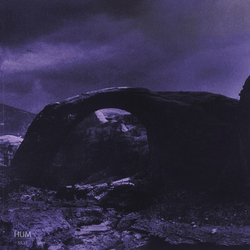 28. Hum: InletSpace-rock cult favorites Hum made a triumphant return over the summer, releasing their fifth studio album—and their first in 22 years, following 1998’s Downward Is Heavenward—with little-to-no advance notice in June. The Champaign, Ill., quartet unleash “Waves” of intoxicating distortion, both on that tone-setting opener and throughout Inlet’s eight-track hour. Matt Talbott and Tim Lash’s dual guitar torrents are exceptional—powerful without being oppressive, they tap into nostalgia for the band’s mid-’90s heyday, yet don’t belong to any one time period. Meanwhile, Talbott’s vocals paint dark, imaginative portraits of an empty earth, “misplaced dreams” and “starlight fallen,” as if these songs are being beamed back in time from a near-future world where natural tranquility and humankind’s hopes are little more than distant memories. Inlet’s grit is like sandpaper for the mind, leaving it smoother and more serene than before. —Scott Russell
28. Hum: InletSpace-rock cult favorites Hum made a triumphant return over the summer, releasing their fifth studio album—and their first in 22 years, following 1998’s Downward Is Heavenward—with little-to-no advance notice in June. The Champaign, Ill., quartet unleash “Waves” of intoxicating distortion, both on that tone-setting opener and throughout Inlet’s eight-track hour. Matt Talbott and Tim Lash’s dual guitar torrents are exceptional—powerful without being oppressive, they tap into nostalgia for the band’s mid-’90s heyday, yet don’t belong to any one time period. Meanwhile, Talbott’s vocals paint dark, imaginative portraits of an empty earth, “misplaced dreams” and “starlight fallen,” as if these songs are being beamed back in time from a near-future world where natural tranquility and humankind’s hopes are little more than distant memories. Inlet’s grit is like sandpaper for the mind, leaving it smoother and more serene than before. —Scott Russell
 27. Fleet Foxes: ShoreThere are several elements that make a Fleet Foxes album great. Layered vocals, daring instrumental swells and vibrant, at times anxious, lyrics are all present throughout their catalogue, from the assured folk-pop of their 2008 self-titled debut to the magnificent existential ramblings on 2017’s Crack-Up. These signifiers are all present on their new album Shore, but the effects are much more nuanced. Fleet Foxes remain a quintessential millennial band, and, on Shore—which dropped with only a day’s warning—they’re once again tapping into the millennial psyche, this time with a little more optimism. Upon first listen, Shore lacks the immediacy of Fleet Foxes and 2011’s Helplessness Blues—at least from a sonic standpoint. But frontman Robin Pecknold’s astonishingly thoughtful lyrics quickly bring the listener back up to speed, at times recalling the grandiose scope of Crack-Up’s more cheerful moments, even if the indie-rock stylings are lagging a bit. —Ellen Johnson
27. Fleet Foxes: ShoreThere are several elements that make a Fleet Foxes album great. Layered vocals, daring instrumental swells and vibrant, at times anxious, lyrics are all present throughout their catalogue, from the assured folk-pop of their 2008 self-titled debut to the magnificent existential ramblings on 2017’s Crack-Up. These signifiers are all present on their new album Shore, but the effects are much more nuanced. Fleet Foxes remain a quintessential millennial band, and, on Shore—which dropped with only a day’s warning—they’re once again tapping into the millennial psyche, this time with a little more optimism. Upon first listen, Shore lacks the immediacy of Fleet Foxes and 2011’s Helplessness Blues—at least from a sonic standpoint. But frontman Robin Pecknold’s astonishingly thoughtful lyrics quickly bring the listener back up to speed, at times recalling the grandiose scope of Crack-Up’s more cheerful moments, even if the indie-rock stylings are lagging a bit. —Ellen Johnson
 26. The Microphones: Microphones in 2020The last recording released under The Microphones’ name was 2003’s Mount Eerie, a precursor to Phil Elverum’s creative shift. The notion that The Microphones disbanded is something of a misconception, because even though he collaborated with other musicians on the project throughout the years, the Microphones name is really synonymous with Elverum himself. Since assuming the Mount Eerie persona, he’s proven incredibly prolific, releasing 10 studio albums under his new name between 2005 and 2019. Elverum slipped back into The Microphones for a performance last summer, and when the stirrings around this choice picked up, he began toying with “what it even means to step back into an old mode.” The result is Microphones in 2020, the sprawling, one-track album lasting nearly 45 minutes. Microphones in 2020 contains some of the year’s best, most reflective and probing lyrics. Elverum’s mastery of language is impressive thanks to his ability to capture an intangible, fleeting feeling without coming across as pretentious or out of reach. It’s honestly worth sitting down and reading the lyrics along with the song, consuming the words as poetry. His descriptions of nature are some of the most soul-stirring moments of the album, which isn’t surprising considering his lifelong sense of unity with the flora and fauna around him. “I started making my own embarrassing early tries at this / thing that sings at night above the house, branches in the wind bending / wordlessly, I wanted to capture it on tape,” he says of his early musical intentions. —Clare Martin
26. The Microphones: Microphones in 2020The last recording released under The Microphones’ name was 2003’s Mount Eerie, a precursor to Phil Elverum’s creative shift. The notion that The Microphones disbanded is something of a misconception, because even though he collaborated with other musicians on the project throughout the years, the Microphones name is really synonymous with Elverum himself. Since assuming the Mount Eerie persona, he’s proven incredibly prolific, releasing 10 studio albums under his new name between 2005 and 2019. Elverum slipped back into The Microphones for a performance last summer, and when the stirrings around this choice picked up, he began toying with “what it even means to step back into an old mode.” The result is Microphones in 2020, the sprawling, one-track album lasting nearly 45 minutes. Microphones in 2020 contains some of the year’s best, most reflective and probing lyrics. Elverum’s mastery of language is impressive thanks to his ability to capture an intangible, fleeting feeling without coming across as pretentious or out of reach. It’s honestly worth sitting down and reading the lyrics along with the song, consuming the words as poetry. His descriptions of nature are some of the most soul-stirring moments of the album, which isn’t surprising considering his lifelong sense of unity with the flora and fauna around him. “I started making my own embarrassing early tries at this / thing that sings at night above the house, branches in the wind bending / wordlessly, I wanted to capture it on tape,” he says of his early musical intentions. —Clare Martin
 25. Ben Seretan: Youth Pastoral“You will always be hungry / For something you can’t hold,” Ben Seretan sings in the opening minutes of his latest LP, an undeniably dynamic examination of how human beings seek meaning, whether in a higher power or in each other. The California-born, New York-based multi-instrumentalist and singer/songwriter longs for community on slow-blooming opener “1 Of”; “[prays] to the breeze / with asphalt in his knees” on the pedal steel-accented “Power Zone”; yearns to properly honor a lover and/or deity on stunning centerpiece “Am I Doing Right by You?”; harmonizes with his late friend, artist Devra Freelander, on the open-hearted “Shadow” (and others); and recalls being baptized on “Holding Up the Sun.” Youth Pastoral is a stunning album that draws its power from Seretan’s Neil Young-like vocals, his evocative, soul-baring songwriting, and a rustic, reverent hum befitting of its heavenward gaze. —Scott Russell
25. Ben Seretan: Youth Pastoral“You will always be hungry / For something you can’t hold,” Ben Seretan sings in the opening minutes of his latest LP, an undeniably dynamic examination of how human beings seek meaning, whether in a higher power or in each other. The California-born, New York-based multi-instrumentalist and singer/songwriter longs for community on slow-blooming opener “1 Of”; “[prays] to the breeze / with asphalt in his knees” on the pedal steel-accented “Power Zone”; yearns to properly honor a lover and/or deity on stunning centerpiece “Am I Doing Right by You?”; harmonizes with his late friend, artist Devra Freelander, on the open-hearted “Shadow” (and others); and recalls being baptized on “Holding Up the Sun.” Youth Pastoral is a stunning album that draws its power from Seretan’s Neil Young-like vocals, his evocative, soul-baring songwriting, and a rustic, reverent hum befitting of its heavenward gaze. —Scott Russell
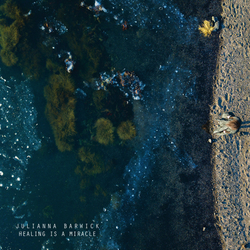 24. Julianna Barwick: Healing Is A MiracleLos Angeles-based composer Julianna Barwick brings the grandiosity of an orchestral album to her latest ambient LP Healing Is A Miracle. Full of awe-inspiring swells, this is an album that will staggeringly humble any soul that crosses its path. You’ll feel small, but not insignificant, in the presence of Barwick’s wash of angelic vocals and rich, improvisational soundscapes. Beauty of this scope and purity is almost too emotionally painful, but the thought of not visiting Barwick’s heavenlike world is even more difficult to bear. While some ambient releases lean heavily into icy, alienating sounds, Healing Is A Miracle mines majesty from the divine. The album, which also features frequent collaborators Jónsi, Nosaj Thing and Mary Lattimore, is a true feat of solace and wonder. —Lizzie Manno
24. Julianna Barwick: Healing Is A MiracleLos Angeles-based composer Julianna Barwick brings the grandiosity of an orchestral album to her latest ambient LP Healing Is A Miracle. Full of awe-inspiring swells, this is an album that will staggeringly humble any soul that crosses its path. You’ll feel small, but not insignificant, in the presence of Barwick’s wash of angelic vocals and rich, improvisational soundscapes. Beauty of this scope and purity is almost too emotionally painful, but the thought of not visiting Barwick’s heavenlike world is even more difficult to bear. While some ambient releases lean heavily into icy, alienating sounds, Healing Is A Miracle mines majesty from the divine. The album, which also features frequent collaborators Jónsi, Nosaj Thing and Mary Lattimore, is a true feat of solace and wonder. —Lizzie Manno
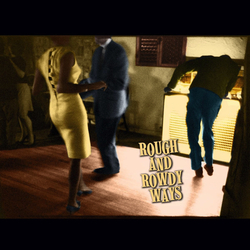 23. Bob Dylan: Rough and Rowdy WaysIt’s tempting to see Rough and Rowdy Ways as one of those late-career ruminations on mortality that often seem to come from musicians of a certain age, or a full-circle accounting that reconnects Bob Dylan, now 79, with his early days as a folk singer with a socially conscious bent. On the surface, the album could be either of those things, or both: After all, he gives over nearly 17 minutes of his 39th studio LP to a single song about the day that John F. Kennedy was assassinated, in 1963, when the singer was 22. Yet the idea that he’s revisiting his youth, or settling his affairs, is too simple, too predictable, for a wily contrarian like Dylan. Since when has he ever done the obvious thing? Indeed, his latest comes after three albums spent rummaging around in the American songbook, an exercise that amounted to a gracious courtesy call from a guy who knows a few things about writing songs that endure. It’s hard to say what effect, if any, burrowing into those touchstone tunes has had on his own writing. Rough and Rowdy Ways simply sounds like Dylan, at his most Dylan-esque. These 10 tracks are steeped in American history, classical symbolism and biblical imagery, to say nothing of the literary asides, pop-culture references and musical allusions, from Shakespeare and William Blake to Ginsburg, Corso and Kerouac, Indiana Jones to Altamont, Chopin to Charlie Parker to “them British bad boys, The Rolling Stones,” as Dylan puts it on opener “I Contain Multitudes.” —Eric R. Danton
23. Bob Dylan: Rough and Rowdy WaysIt’s tempting to see Rough and Rowdy Ways as one of those late-career ruminations on mortality that often seem to come from musicians of a certain age, or a full-circle accounting that reconnects Bob Dylan, now 79, with his early days as a folk singer with a socially conscious bent. On the surface, the album could be either of those things, or both: After all, he gives over nearly 17 minutes of his 39th studio LP to a single song about the day that John F. Kennedy was assassinated, in 1963, when the singer was 22. Yet the idea that he’s revisiting his youth, or settling his affairs, is too simple, too predictable, for a wily contrarian like Dylan. Since when has he ever done the obvious thing? Indeed, his latest comes after three albums spent rummaging around in the American songbook, an exercise that amounted to a gracious courtesy call from a guy who knows a few things about writing songs that endure. It’s hard to say what effect, if any, burrowing into those touchstone tunes has had on his own writing. Rough and Rowdy Ways simply sounds like Dylan, at his most Dylan-esque. These 10 tracks are steeped in American history, classical symbolism and biblical imagery, to say nothing of the literary asides, pop-culture references and musical allusions, from Shakespeare and William Blake to Ginsburg, Corso and Kerouac, Indiana Jones to Altamont, Chopin to Charlie Parker to “them British bad boys, The Rolling Stones,” as Dylan puts it on opener “I Contain Multitudes.” —Eric R. Danton
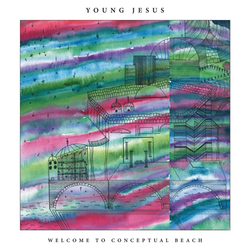 22. Young Jesus: Welcome to Conceptual BeachLos Angeles-based band Young Jesus shared their new album, Welcome to Conceptual Beach, via Saddle Creek, which follows 2018’s The Whole Thing Is Just There. They do a lot with just seven tracks—their improvisational jams span jazz, math rock and haunting folk-rock, but nothing is set in stone. It’s blissfully conscious and unconscious, and at times, they sound more like conjurers than musicians. Their abstract, impressionistic lyrics heighten the beautiful recklessness of their music. —Lizzie Manno
22. Young Jesus: Welcome to Conceptual BeachLos Angeles-based band Young Jesus shared their new album, Welcome to Conceptual Beach, via Saddle Creek, which follows 2018’s The Whole Thing Is Just There. They do a lot with just seven tracks—their improvisational jams span jazz, math rock and haunting folk-rock, but nothing is set in stone. It’s blissfully conscious and unconscious, and at times, they sound more like conjurers than musicians. Their abstract, impressionistic lyrics heighten the beautiful recklessness of their music. —Lizzie Manno
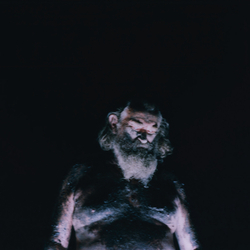 21. Nothing: The Great DismalOn their fourth album The Great Dismal, Philadelphia shoegaze outfit Nothing triumph with both bold and subtle sounds. The band have always excelled at details and dynamics, and they deliver here without fail. The final passages of opening track “A Fabricated Life” really cement the album’s prodigious and intimate themes: “Long before the fall / Did we have it all along? / Sing the same old songs / Beat the same old tired drum / But what else can I ask for? / I’m nauseous from the ride / Degeneration in the wind / A fabricated life.” These moods of erosion, numbness and uncertainty pervade the album, and their mythical soundscapes bolster the weight of these feelings and elevate their sense of urgency. The Great Dismal watches as humanity is put through the wringer and responds with godlike, pummeling guitars and metaphorical, emotionally revealing lyrics. One minute, they’re contemplating themes of love, reason, perception and death, on a grand scale and in simple terms, and the next, they’re marveling at people’s reactions to rain (“Isn’t it strange / Watching people / Try and outrun rain”). It’s a sweltering expulsion of anxieties and a thoughtful chronicling of our species’ downfall. —Lizzie Manno
21. Nothing: The Great DismalOn their fourth album The Great Dismal, Philadelphia shoegaze outfit Nothing triumph with both bold and subtle sounds. The band have always excelled at details and dynamics, and they deliver here without fail. The final passages of opening track “A Fabricated Life” really cement the album’s prodigious and intimate themes: “Long before the fall / Did we have it all along? / Sing the same old songs / Beat the same old tired drum / But what else can I ask for? / I’m nauseous from the ride / Degeneration in the wind / A fabricated life.” These moods of erosion, numbness and uncertainty pervade the album, and their mythical soundscapes bolster the weight of these feelings and elevate their sense of urgency. The Great Dismal watches as humanity is put through the wringer and responds with godlike, pummeling guitars and metaphorical, emotionally revealing lyrics. One minute, they’re contemplating themes of love, reason, perception and death, on a grand scale and in simple terms, and the next, they’re marveling at people’s reactions to rain (“Isn’t it strange / Watching people / Try and outrun rain”). It’s a sweltering expulsion of anxieties and a thoughtful chronicling of our species’ downfall. —Lizzie Manno
 20. Yves Tumor: Heaven To a Tortured MindYves Tumor’s new album opens with Sean Bowie shouting, “I think I can solve it / I can be your all.” Later, on “Medicine Burn,” they claim “I can’t lift my own troubles,” then shout a reversal on single “Kerosene!”: “I can be anything / tell me what you need.” Heaven to a Tortured Mind is emphatically about what Tumor can and can’t do, because what else are pop anthems about? “Creep” is about how Radiohead are incapable of fitting in with mainstream society, while “I Will Always Love You” is a declaration of Whitney Houston’s enduring love amid crisis. Yves Tumor have long skirted the line between pop candor and experimental psychedelia, often landing somewhere far away from both in a wonderland of threatening, dagger-sharp guitar riffs and gossamer vocal production. In many ways, 2018’s Safe in the Hands of Love was Tumor’s official rockstar moment. Listening to Heaven for a Tortured Mind will make you question your own memories of the singer, because they’ve never sounded more immediate, more relatable or more desirously messy. —Austin Jones
20. Yves Tumor: Heaven To a Tortured MindYves Tumor’s new album opens with Sean Bowie shouting, “I think I can solve it / I can be your all.” Later, on “Medicine Burn,” they claim “I can’t lift my own troubles,” then shout a reversal on single “Kerosene!”: “I can be anything / tell me what you need.” Heaven to a Tortured Mind is emphatically about what Tumor can and can’t do, because what else are pop anthems about? “Creep” is about how Radiohead are incapable of fitting in with mainstream society, while “I Will Always Love You” is a declaration of Whitney Houston’s enduring love amid crisis. Yves Tumor have long skirted the line between pop candor and experimental psychedelia, often landing somewhere far away from both in a wonderland of threatening, dagger-sharp guitar riffs and gossamer vocal production. In many ways, 2018’s Safe in the Hands of Love was Tumor’s official rockstar moment. Listening to Heaven for a Tortured Mind will make you question your own memories of the singer, because they’ve never sounded more immediate, more relatable or more desirously messy. —Austin Jones
 19. U.S. Girls: Heavy LightIf Heavy Light were released five years ago, it wouldn’t be considered a political album. Thankfully (or unfortunately), not even a casual listener in 2020 would miss Meghan Remy’s cutting commentary, a convention of her music that’s become quintessential in her over-10-year musical career. Her most referential work to date, Heavy Light is defined by an inward-facing well of civic unrest, with Remy foregoing the prescriptive style of her manifesto-like 2018 album In a Poem Unlimited. The record’s name is itself a reference to Franz Kafka (“Faith, like a guillotine. As heavy as light.”), and Remy merges the ideals of the realist movement with narratives of experiential, hometown frustration. There’s a clear reference to Bruce Springsteen (instead of being “Born to Run,” Remy would say she’s “Born to Lose”) throughout Heavy Light, with Springsteen’s current E Street Band saxophonist Jake Clemons interjecting a soul-rousing solo in lead single “Overtime.” It’s here, after the only two songs on Heavy Light that even slightly resemble Poem (“4 American Dollars” and “Overtime”), that Remy begins to build the conscience-focused rhetoric of the record. Largely, the album is a move to activism of consent: She isn’t making assumptions about what people want or how they feel; they have to want it, too, and need to get there in their own right. —Austin Jones
19. U.S. Girls: Heavy LightIf Heavy Light were released five years ago, it wouldn’t be considered a political album. Thankfully (or unfortunately), not even a casual listener in 2020 would miss Meghan Remy’s cutting commentary, a convention of her music that’s become quintessential in her over-10-year musical career. Her most referential work to date, Heavy Light is defined by an inward-facing well of civic unrest, with Remy foregoing the prescriptive style of her manifesto-like 2018 album In a Poem Unlimited. The record’s name is itself a reference to Franz Kafka (“Faith, like a guillotine. As heavy as light.”), and Remy merges the ideals of the realist movement with narratives of experiential, hometown frustration. There’s a clear reference to Bruce Springsteen (instead of being “Born to Run,” Remy would say she’s “Born to Lose”) throughout Heavy Light, with Springsteen’s current E Street Band saxophonist Jake Clemons interjecting a soul-rousing solo in lead single “Overtime.” It’s here, after the only two songs on Heavy Light that even slightly resemble Poem (“4 American Dollars” and “Overtime”), that Remy begins to build the conscience-focused rhetoric of the record. Largely, the album is a move to activism of consent: She isn’t making assumptions about what people want or how they feel; they have to want it, too, and need to get there in their own right. —Austin Jones
 18. Kelly Lee Owens: Inner SongDream pop and techno might be vastly different genres, but they share a common goal. Where dream pop’s glimmering, reverb-soaked guitars and keyboards entrance listeners into a listless stupor, techno’s clattering 808s and simple, repetitive rhythms keep the party going. While these modi operandi at first seem diametrically opposed, a closer look reveals that both genres impart enchantment, nirvana, hypnosis and even healing—a night out at the rave is as palliating as an evening splayed out listening to Teen Dream. Welsh songwriter-producer Kelly Lee Owens understands these genres’ powerful overlap more than any other musician in recent memory. With her sophomore album Inner Song, however, Owens potentially opens herself to a much wider audience. A thrilling, dynamic LP that overflows with life, Inner Song is full of dance floor devotionals that easily rank among her most accessible creations to date. If Kelly Lee Owens gently opened the door between dream pop and techno, Inner Song rushes through it and builds a world where ecstatic, curative, untethered electronic sounds abound. —Max Freedman
18. Kelly Lee Owens: Inner SongDream pop and techno might be vastly different genres, but they share a common goal. Where dream pop’s glimmering, reverb-soaked guitars and keyboards entrance listeners into a listless stupor, techno’s clattering 808s and simple, repetitive rhythms keep the party going. While these modi operandi at first seem diametrically opposed, a closer look reveals that both genres impart enchantment, nirvana, hypnosis and even healing—a night out at the rave is as palliating as an evening splayed out listening to Teen Dream. Welsh songwriter-producer Kelly Lee Owens understands these genres’ powerful overlap more than any other musician in recent memory. With her sophomore album Inner Song, however, Owens potentially opens herself to a much wider audience. A thrilling, dynamic LP that overflows with life, Inner Song is full of dance floor devotionals that easily rank among her most accessible creations to date. If Kelly Lee Owens gently opened the door between dream pop and techno, Inner Song rushes through it and builds a world where ecstatic, curative, untethered electronic sounds abound. —Max Freedman
 17. Sault: Untitled (Black Is)“The revolution has come (out the lies!) / Still won’t put down the gun.” This is the first line of Sault’s new album Untitled (Black Is). The album of the Movement has arrived—and every second of it is glorious. Last year, a mysterious soul group named Sault arrived out of nowhere with two albums, titled 5 and 7. No one knew the identities of its musicians, and the albums were released on an independent label, but they drew rapturous acclaim. 5 and 7 were feasts of rhythmic and exuberant Afrobeat, soul, funk and R&B—the songs are passionate, radiant, radical and rooted in rich Black musical traditions (which, by extension, are the same roots of most popular genres). They were unexpected triumphs, but after releasing two albums in the same year, one might’ve figured Sault would go silent—at least for a little while. But earlier this year, something incredible happened—they surprise-released another album, Untitled (Black Is). On June 12, they posted a square image of a Black power fist on socials with the caption: “We present our first ‘Untitled’ album to mark a moment in time where we as Black People, and of Black Origin are fighting for our lives. RIP George Floyd and all those who have suffered from police brutality and systemic racism. Change is happening … We are focused.” The languid synthesizers on “Eternal Life,” the fury-filled shared vocals on “Stop Dem,” the jazzy guitars on “This Generation” and the skittering beats on “Black” make up a rich tapestry of soul, funk and gospel music. While there are nods to Motown, these aren’t your parents’ classic soul records—you’re hearing the eccentricities, voices and personalities of today and tomorrow. —Lizzie Manno
17. Sault: Untitled (Black Is)“The revolution has come (out the lies!) / Still won’t put down the gun.” This is the first line of Sault’s new album Untitled (Black Is). The album of the Movement has arrived—and every second of it is glorious. Last year, a mysterious soul group named Sault arrived out of nowhere with two albums, titled 5 and 7. No one knew the identities of its musicians, and the albums were released on an independent label, but they drew rapturous acclaim. 5 and 7 were feasts of rhythmic and exuberant Afrobeat, soul, funk and R&B—the songs are passionate, radiant, radical and rooted in rich Black musical traditions (which, by extension, are the same roots of most popular genres). They were unexpected triumphs, but after releasing two albums in the same year, one might’ve figured Sault would go silent—at least for a little while. But earlier this year, something incredible happened—they surprise-released another album, Untitled (Black Is). On June 12, they posted a square image of a Black power fist on socials with the caption: “We present our first ‘Untitled’ album to mark a moment in time where we as Black People, and of Black Origin are fighting for our lives. RIP George Floyd and all those who have suffered from police brutality and systemic racism. Change is happening … We are focused.” The languid synthesizers on “Eternal Life,” the fury-filled shared vocals on “Stop Dem,” the jazzy guitars on “This Generation” and the skittering beats on “Black” make up a rich tapestry of soul, funk and gospel music. While there are nods to Motown, these aren’t your parents’ classic soul records—you’re hearing the eccentricities, voices and personalities of today and tomorrow. —Lizzie Manno
 16. Backxwash: God Has Nothing to Do With This Leave Him Out of ItZambia-born, Canada-based artist Backxwash dropped one of the creepiest rap albums of 2020. Ashanti Mutinta’s voice is threatening, both in her normal cadence and the contorted form used throughout her records. Her ferocity paired with off-kilter, spine-tingling beats is best experienced at night with eyes wide open, stored-up rage and a desire for bloodthirsty imagery. While her 2019 album DEVIANCY was explosive, maniacal and perfect for letting loose in a live environment, this year’s follow-up is more detailed and downtempo, but it still retains its predecessor’s mystifying qualities. DEVIANCY raged against patriarchy and traditional beauty standards as she crowned herself a “witch bitch,” rather than a “rich bitch.” On 2020’s God Has Nothing to Do With This Leave Him Out of It, she’s even bolder, asking for “war with these bitches”—those “bitches” being abusers, her own demons, complacency and others. It’s her first record with her own beats, and she doesn’t disappoint. She sprinkles in various samples from Led Zeppelin, Ozzy Osbourne and wolves, making for the perfect dose of supernatural fury. —Lizzie Manno
16. Backxwash: God Has Nothing to Do With This Leave Him Out of ItZambia-born, Canada-based artist Backxwash dropped one of the creepiest rap albums of 2020. Ashanti Mutinta’s voice is threatening, both in her normal cadence and the contorted form used throughout her records. Her ferocity paired with off-kilter, spine-tingling beats is best experienced at night with eyes wide open, stored-up rage and a desire for bloodthirsty imagery. While her 2019 album DEVIANCY was explosive, maniacal and perfect for letting loose in a live environment, this year’s follow-up is more detailed and downtempo, but it still retains its predecessor’s mystifying qualities. DEVIANCY raged against patriarchy and traditional beauty standards as she crowned herself a “witch bitch,” rather than a “rich bitch.” On 2020’s God Has Nothing to Do With This Leave Him Out of It, she’s even bolder, asking for “war with these bitches”—those “bitches” being abusers, her own demons, complacency and others. It’s her first record with her own beats, and she doesn’t disappoint. She sprinkles in various samples from Led Zeppelin, Ozzy Osbourne and wolves, making for the perfect dose of supernatural fury. —Lizzie Manno
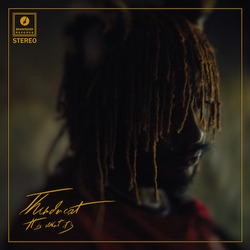 15. Thundercat: It Is What It IsWhile the cat noises and fart sounds on his last album, 2017’s Drunk, offended one prominent music critic so much he nearly crashed his car in a fit of frustration, bassist Stephen Bruner (aka Thundercat) didn’t actually need to tame his prodigious appetite for variety. On previous Thundercat albums, he reveled in his own zaniness, but he also showed a knack for going right to the edge of incoherence while maintaining just enough of a consistent thread. Listening to a player with a range that rivals the late bass giant Jaco Pastorius—and, arguably, the chops to match—part of the appeal comes from just watching the ideas roam free. That makes it all the more remarkable that Bruner has decided to rein in his wanderlust on his fourth solo LP, It Is What It Is. It’s not that It Is What It Is lacks variety. Much like on his other output, Bruner once again draws freely from the wells of funk, soul, disco, jazz, rock, hip-hop and lo-fi experimentation. The crucial difference this time is that he shoehorns those influences into a startlingly smooth flow that somehow accommodates dazzling technical proficiency. On It Is What It Is, Bruner brings ’70s-style R&B balladeering (“Overseas,” “How I Feel”) and fusion (“Interstellar Love,” “How Sway”) to the forefront as other styles recede into supportive roles. In terms of the impact of the record as a complete listening experience, the payoff is tremendous. —Saby Reyes-Kulkarni
15. Thundercat: It Is What It IsWhile the cat noises and fart sounds on his last album, 2017’s Drunk, offended one prominent music critic so much he nearly crashed his car in a fit of frustration, bassist Stephen Bruner (aka Thundercat) didn’t actually need to tame his prodigious appetite for variety. On previous Thundercat albums, he reveled in his own zaniness, but he also showed a knack for going right to the edge of incoherence while maintaining just enough of a consistent thread. Listening to a player with a range that rivals the late bass giant Jaco Pastorius—and, arguably, the chops to match—part of the appeal comes from just watching the ideas roam free. That makes it all the more remarkable that Bruner has decided to rein in his wanderlust on his fourth solo LP, It Is What It Is. It’s not that It Is What It Is lacks variety. Much like on his other output, Bruner once again draws freely from the wells of funk, soul, disco, jazz, rock, hip-hop and lo-fi experimentation. The crucial difference this time is that he shoehorns those influences into a startlingly smooth flow that somehow accommodates dazzling technical proficiency. On It Is What It Is, Bruner brings ’70s-style R&B balladeering (“Overseas,” “How I Feel”) and fusion (“Interstellar Love,” “How Sway”) to the forefront as other styles recede into supportive roles. In terms of the impact of the record as a complete listening experience, the payoff is tremendous. —Saby Reyes-Kulkarni
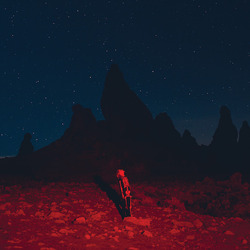 14. Phoebe Bridgers: PunisherHer sophomore album Punisher cements what may be Phoebe Bridgers’ most understated gift of all: her seemingly innate ability to capture the mundanity of modern sadness in song. Tucked in among the record’s memorable melodies, clever arrangements and impressive guests are a steady stream of details that lend plainspoken perspective to Bridgers’ emotional highs and (mostly) lows. These kinds of details ground her work in the same way shading makes a still life painting pop. They make them feel not just sad, but real. As an example, look back to “Funeral,” one of the highlights of Bridgers’ 2017 debut Stranger in the Alps. It’s a devastating tune about death and depression, and if it ended at the three-minute mark, it would still be a stunner. But she tacks on an extra bit that contextualizes the rest of the song: “It’s 4 a.m. again,” she sings flatly, “and I’m doing nothing again.” And all of a sudden … you’re there. Because you’ve been there (probably), and because Bridgers has been there, too, and she knows how to make this song about a stranger’s overdose into a highly relatable moment. The story now has a place to sit—in a dark room, screen glowing, silence deafening, thoughts racing. Again. Those kinds of moments pop up all over Punisher, which is generally noisier and more upbeat than its predecessor. The album’s clear standout (and one of the year’s best songs), “Kyoto,” features Bridgers’ crunchiest guitar riffs yet, a soaring chorus and the travails of dealing with someone who can’t quite get their shit together juxtaposed with a wander through a 7-11 and trip to the suburbs to stare at chemtrails. “I don’t forgive you,” she sings as a horn arrangement crests over this mind-numbing scene, “but please don’t hold me to it.” Later, in “Moon Song,” Bridgers traces the blurry boundaries of a complicated relationship before laying it all out in the final verse: “You are sick and you’re married and you might be dying,” she sings over a small crescendo, “but you’re holding me like water in your hands.” —Ben Salmon
14. Phoebe Bridgers: PunisherHer sophomore album Punisher cements what may be Phoebe Bridgers’ most understated gift of all: her seemingly innate ability to capture the mundanity of modern sadness in song. Tucked in among the record’s memorable melodies, clever arrangements and impressive guests are a steady stream of details that lend plainspoken perspective to Bridgers’ emotional highs and (mostly) lows. These kinds of details ground her work in the same way shading makes a still life painting pop. They make them feel not just sad, but real. As an example, look back to “Funeral,” one of the highlights of Bridgers’ 2017 debut Stranger in the Alps. It’s a devastating tune about death and depression, and if it ended at the three-minute mark, it would still be a stunner. But she tacks on an extra bit that contextualizes the rest of the song: “It’s 4 a.m. again,” she sings flatly, “and I’m doing nothing again.” And all of a sudden … you’re there. Because you’ve been there (probably), and because Bridgers has been there, too, and she knows how to make this song about a stranger’s overdose into a highly relatable moment. The story now has a place to sit—in a dark room, screen glowing, silence deafening, thoughts racing. Again. Those kinds of moments pop up all over Punisher, which is generally noisier and more upbeat than its predecessor. The album’s clear standout (and one of the year’s best songs), “Kyoto,” features Bridgers’ crunchiest guitar riffs yet, a soaring chorus and the travails of dealing with someone who can’t quite get their shit together juxtaposed with a wander through a 7-11 and trip to the suburbs to stare at chemtrails. “I don’t forgive you,” she sings as a horn arrangement crests over this mind-numbing scene, “but please don’t hold me to it.” Later, in “Moon Song,” Bridgers traces the blurry boundaries of a complicated relationship before laying it all out in the final verse: “You are sick and you’re married and you might be dying,” she sings over a small crescendo, “but you’re holding me like water in your hands.” —Ben Salmon
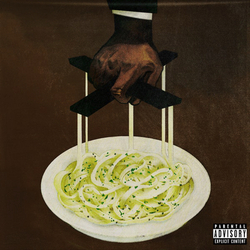 13. Freddie Gibbs & The Alchemist: AlfredoFreddie Gibbs’ change in producers is immediately noticeable when a Bernie Mac sample precedes a sultry guitar riff in the album’s first track, “1985.” That’s not a jab at Madlib—his work on Bandana was spotless—but The Alchemist’s experimentation is especially stark here. Gibbs maintains his usual level-headedness and stoic disposition through his expressions as an analytical gangster. Features from Rick Ross, Benny The Butcher, Tyler, The Creator and Conway the Machine solidify the credibility Gibbs is back to confirm. —Jarrod Johnson II
13. Freddie Gibbs & The Alchemist: AlfredoFreddie Gibbs’ change in producers is immediately noticeable when a Bernie Mac sample precedes a sultry guitar riff in the album’s first track, “1985.” That’s not a jab at Madlib—his work on Bandana was spotless—but The Alchemist’s experimentation is especially stark here. Gibbs maintains his usual level-headedness and stoic disposition through his expressions as an analytical gangster. Features from Rick Ross, Benny The Butcher, Tyler, The Creator and Conway the Machine solidify the credibility Gibbs is back to confirm. —Jarrod Johnson II
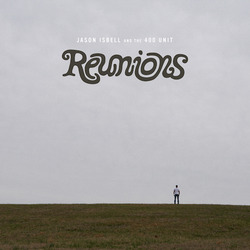 12. Jason Isbell and the 400 Unit: ReunionsJason Isbell isn’t the kind of guy you’d think of as haunted, but he’s surrounded by ghosts on his new album. Some of them are the literal shades of people he (or his narrators) once knew who are gone now. Others are figurative: past selves, maybe, lingering in the shadows that memory casts. Together, they’re the spirits that constitute Reunions, Isbell’s latest LP with his band The 400 Unit, and the follow-up to his 2017 release The Nashville Sound. It’s not surprising that Isbell would find himself in the company of specters. It’s a function of getting older and realizing how much you, and the world around you, have changed over time, of discovering that parts of life that once loomed large in your mind aren’t as big you seem to remember. Isbell turned 41 this year, young enough that his formative years still seem closer than they really are, and old enough for the Alabama-born singer to have discovered that taking the longer view helps ease the sting of all those hard-learned lessons that can pile up in early adulthood. That is, if you’re lucky enough to come through it with your wits intact and with enough perspective to see the journey as something more than a bumpy ride over rough terrain. Isbell has both smarts and perspective, and each seems to increase a little bit more from one album to the next. He’s always been an empathetic songwriter with a distinctive willingness to see the world from a point of view other than his own. Like any good storyteller, Isbell creates characters, and he has a storyteller’s ability to bring them to life by infusing them with enough of his own experiences, be it sobriety or fatherhood, to make their struggles and small triumphs resonate. —Eric R. Danton
12. Jason Isbell and the 400 Unit: ReunionsJason Isbell isn’t the kind of guy you’d think of as haunted, but he’s surrounded by ghosts on his new album. Some of them are the literal shades of people he (or his narrators) once knew who are gone now. Others are figurative: past selves, maybe, lingering in the shadows that memory casts. Together, they’re the spirits that constitute Reunions, Isbell’s latest LP with his band The 400 Unit, and the follow-up to his 2017 release The Nashville Sound. It’s not surprising that Isbell would find himself in the company of specters. It’s a function of getting older and realizing how much you, and the world around you, have changed over time, of discovering that parts of life that once loomed large in your mind aren’t as big you seem to remember. Isbell turned 41 this year, young enough that his formative years still seem closer than they really are, and old enough for the Alabama-born singer to have discovered that taking the longer view helps ease the sting of all those hard-learned lessons that can pile up in early adulthood. That is, if you’re lucky enough to come through it with your wits intact and with enough perspective to see the journey as something more than a bumpy ride over rough terrain. Isbell has both smarts and perspective, and each seems to increase a little bit more from one album to the next. He’s always been an empathetic songwriter with a distinctive willingness to see the world from a point of view other than his own. Like any good storyteller, Isbell creates characters, and he has a storyteller’s ability to bring them to life by infusing them with enough of his own experiences, be it sobriety or fatherhood, to make their struggles and small triumphs resonate. —Eric R. Danton
 11. Caribou: SuddenlyThe weight of mortality permeates Suddenly, Dan Snaith’s latest album under his Caribou moniker. Between the death of a close relative, the birth of a second child and the possibility that the world will collapse under the weight of its own hubris, it’s hard to fault Snaith for ruminating about the big beyond. “I can’t do it all on my own,” he sighs contemplatively on “Sister” over a spectral synth and the sound of his mother singing a lullaby. The subject of his admission is unclear, but it’s a thesis statement that recurs throughout his career, most overtly in Our Love’s “Can’t Do Without You,” the euphoric record and single that brought him big-font festival lineup placements and conservative talk radio airplay. Suddenly unspools itself more easily than any of his past work, in part thanks to how sharp and pert the sound itself is, but that belies the continued intricacy of Snaith’s handiwork. When he finds lulls in grooves, moments of seeming complacency, he discovers new ways to insert additional stimuli: the split-second breakbeat in the chorus of propellent garage jam “New Jade” or the guitar loop that sours ever so slightly to match its lyrical conceit on “Like I Loved You,” a song that itself sounds like it shares mutant DNA with a Neptunes-produced joint. —Joshua Bote
11. Caribou: SuddenlyThe weight of mortality permeates Suddenly, Dan Snaith’s latest album under his Caribou moniker. Between the death of a close relative, the birth of a second child and the possibility that the world will collapse under the weight of its own hubris, it’s hard to fault Snaith for ruminating about the big beyond. “I can’t do it all on my own,” he sighs contemplatively on “Sister” over a spectral synth and the sound of his mother singing a lullaby. The subject of his admission is unclear, but it’s a thesis statement that recurs throughout his career, most overtly in Our Love’s “Can’t Do Without You,” the euphoric record and single that brought him big-font festival lineup placements and conservative talk radio airplay. Suddenly unspools itself more easily than any of his past work, in part thanks to how sharp and pert the sound itself is, but that belies the continued intricacy of Snaith’s handiwork. When he finds lulls in grooves, moments of seeming complacency, he discovers new ways to insert additional stimuli: the split-second breakbeat in the chorus of propellent garage jam “New Jade” or the guitar loop that sours ever so slightly to match its lyrical conceit on “Like I Loved You,” a song that itself sounds like it shares mutant DNA with a Neptunes-produced joint. —Joshua Bote
 10. Moses Sumney: græIt’s a special thing to watch a promising artist rise to meet the moment in front of them. Some never quite get there. They retreat from the pressure or they run into a ceiling that’s lower than expected. Sometimes bad timing or unlucky circumstances prove insurmountable. And then there are folks like Moses Sumney, the prodigiously talented and artistically ambitious American singer-songwriter who has relentlessly resisted the shortest path to stardom over the past several years. With a stunning voice, a striking figure and a lot of famous friends on his side, he could’ve at any point submitted himself to the hit machine and made a straightforward pop/R&B record that likely would’ve fast-tracked Sumney to household-name status. Instead, he has taken an omnivorous approach to his music, absorbing folk, soul, jazz, ambient and classical music into his unique sound. Still, his debut full-length—2017’s Aromanticism, an intimate exploration of lovelessness—sparked a fire that even Sumney couldn’t sidestep. Anticipation for a follow-up ran high, stoked by a series of gorgeous singles and an unconventional roll-out: Sumney released part one of his sophomore album, græ, in February, and part two arrived in May. Now that all 20 songs are out, it’s clear Sumney has taken one giant step forward from Aromanticism, and in doing so has bounded off the precipice of expectation into a dazzling unknown. Clocking in at just over an hour long, the album is a vast landscape of words and sounds that stretch far across the artistic spectrum, but at the same time feel very much like members of the same extended family. Each shares a certain amount of DNA, but their inherent individualism is what gives Sumney his increasingly singular style. —Ben Salmon
10. Moses Sumney: græIt’s a special thing to watch a promising artist rise to meet the moment in front of them. Some never quite get there. They retreat from the pressure or they run into a ceiling that’s lower than expected. Sometimes bad timing or unlucky circumstances prove insurmountable. And then there are folks like Moses Sumney, the prodigiously talented and artistically ambitious American singer-songwriter who has relentlessly resisted the shortest path to stardom over the past several years. With a stunning voice, a striking figure and a lot of famous friends on his side, he could’ve at any point submitted himself to the hit machine and made a straightforward pop/R&B record that likely would’ve fast-tracked Sumney to household-name status. Instead, he has taken an omnivorous approach to his music, absorbing folk, soul, jazz, ambient and classical music into his unique sound. Still, his debut full-length—2017’s Aromanticism, an intimate exploration of lovelessness—sparked a fire that even Sumney couldn’t sidestep. Anticipation for a follow-up ran high, stoked by a series of gorgeous singles and an unconventional roll-out: Sumney released part one of his sophomore album, græ, in February, and part two arrived in May. Now that all 20 songs are out, it’s clear Sumney has taken one giant step forward from Aromanticism, and in doing so has bounded off the precipice of expectation into a dazzling unknown. Clocking in at just over an hour long, the album is a vast landscape of words and sounds that stretch far across the artistic spectrum, but at the same time feel very much like members of the same extended family. Each shares a certain amount of DNA, but their inherent individualism is what gives Sumney his increasingly singular style. —Ben Salmon
 9. Adrianne Lenker: songsEverything Adrianne Lenker puts her name to could very well be the best thing she’s ever done. She’s best known as the frontwoman and songwriter of Brooklyn-based indie-folk band Big Thief, who released their debut album in 2016 and quickly became critical darlings, and Lenker herself became a particularly influential vocalist. When Big Thief’s tour was cut short back in March, Lenker decided to retreat to a cabin in the mountains of Western Massachusetts to record an album. Space and nature, after all, are hugely important to her work. Lenker’s last solo full-length was 2018’s abysskiss, an album where dreams can lie in pillows, wagons can carry desire and time can count us just as well as we can count it. With songs, Lenker hones in on the duality of life. Love can be pure or manipulative, intimacy can indicate separation or closeness, and pain can be soul-crushing or relieving—and all these realities still lurk beneath the surface even when one has more clearly manifested. These tracks are among Lenker’s most striking and emotionally nuanced. While it lacks the musical dynamism of abysskiss, songs’ lyrics are more potent and detailed. Much like Big Thief’s, Lenker’s music emboldens the listener to think about their mother and dig through photos from their childhood, and not out of typical sentimental longing, but a deeper, primal desire to love and be loved. —Lizzie Manno
9. Adrianne Lenker: songsEverything Adrianne Lenker puts her name to could very well be the best thing she’s ever done. She’s best known as the frontwoman and songwriter of Brooklyn-based indie-folk band Big Thief, who released their debut album in 2016 and quickly became critical darlings, and Lenker herself became a particularly influential vocalist. When Big Thief’s tour was cut short back in March, Lenker decided to retreat to a cabin in the mountains of Western Massachusetts to record an album. Space and nature, after all, are hugely important to her work. Lenker’s last solo full-length was 2018’s abysskiss, an album where dreams can lie in pillows, wagons can carry desire and time can count us just as well as we can count it. With songs, Lenker hones in on the duality of life. Love can be pure or manipulative, intimacy can indicate separation or closeness, and pain can be soul-crushing or relieving—and all these realities still lurk beneath the surface even when one has more clearly manifested. These tracks are among Lenker’s most striking and emotionally nuanced. While it lacks the musical dynamism of abysskiss, songs’ lyrics are more potent and detailed. Much like Big Thief’s, Lenker’s music emboldens the listener to think about their mother and dig through photos from their childhood, and not out of typical sentimental longing, but a deeper, primal desire to love and be loved. —Lizzie Manno
 8. Rina Sawayama: SAWAYAMAWe’ve been inching towards an early Max Martin-esque maximalist pop revival for several years now, between artists like Liz, Kero Kero Bonito, Holiday Sidewinder and, in a strange way, 100 gecs, but SAWAYAMA solidifies the notion that bubblegum pop is back, fully self-aware and ready to conquer. With the help of her longtime producer Clarence Clarity, Rina Sawayama modernizes a sound made famous by Britney Spears, *NSYNC and all who reigned supreme on Casey Kasem’s weekly Top 40 countdown around the turn of the last millennia. More importantly, however, she upholds the integrity of the genre, gently reminding us why we all, deep down, truly love pop music. Right off the bat, SAWAYAMA is powerful. The first three tracks are insanely dynamic, stringing together two vibrant pop songs (the first about standing up on your own, the second about excessive wealth) into what can only be described as Gwen Stefani-meets-nu-metal. As far as the meaning of this record goes, Sawayama sums it up herself in a recent interview: “The album ultimately is about family and identity. It’s about understanding yourself in the context of two opposing cultures (for me British and Japanese), what ‘belonging’ means when home is an evolving concept, figuring out where you sit comfortably within and awkwardly outside of stereotypes, and ultimately trying to be ok with just being you, warts and all.” —Annie Black
8. Rina Sawayama: SAWAYAMAWe’ve been inching towards an early Max Martin-esque maximalist pop revival for several years now, between artists like Liz, Kero Kero Bonito, Holiday Sidewinder and, in a strange way, 100 gecs, but SAWAYAMA solidifies the notion that bubblegum pop is back, fully self-aware and ready to conquer. With the help of her longtime producer Clarence Clarity, Rina Sawayama modernizes a sound made famous by Britney Spears, *NSYNC and all who reigned supreme on Casey Kasem’s weekly Top 40 countdown around the turn of the last millennia. More importantly, however, she upholds the integrity of the genre, gently reminding us why we all, deep down, truly love pop music. Right off the bat, SAWAYAMA is powerful. The first three tracks are insanely dynamic, stringing together two vibrant pop songs (the first about standing up on your own, the second about excessive wealth) into what can only be described as Gwen Stefani-meets-nu-metal. As far as the meaning of this record goes, Sawayama sums it up herself in a recent interview: “The album ultimately is about family and identity. It’s about understanding yourself in the context of two opposing cultures (for me British and Japanese), what ‘belonging’ means when home is an evolving concept, figuring out where you sit comfortably within and awkwardly outside of stereotypes, and ultimately trying to be ok with just being you, warts and all.” —Annie Black
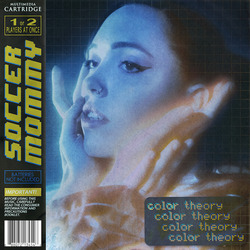 7. Soccer Mommy: color theoryAlthough Soccer Mommy’s 2018 debut studio album Clean transformed her into a critical favorite, indie-rock leader and tour opener for Paramore, Kacey Musgraves and Vampire Weekend, anyone who’s grappled with mental illness knows that success isn’t a salve. Following Clean, Soccer Mommy (real name Sophie Allison) became especially vocal about her struggles with body dysmorphia, depression and anxiety. These challenges lay solely at the periphery of Clean’s tales about youthful, regretful romantic breakdowns and insecurities, but on her eagerly anticipated Clean follow-up color theory, Allison bravely pulls her mental illness from the sidelines to the forefront, and she also tackles a grave subject she’s spoken about far less frequently: her mother’s terminal cancer. Success neither curing mental illness nor reversing a parent’s medical death sentence is a lot for a 22-year-old to face, but Allison is more than up to the task. color theory is an astounding feat of lyricism as clever as it is devastating, and Allison’s songwriting, production and voice are likewise orders of magnitude stronger than they were on Clean, recalling ’90s alt radio while pushing Soccer Mommy in galvanizing new directions. —Max Freedman
7. Soccer Mommy: color theoryAlthough Soccer Mommy’s 2018 debut studio album Clean transformed her into a critical favorite, indie-rock leader and tour opener for Paramore, Kacey Musgraves and Vampire Weekend, anyone who’s grappled with mental illness knows that success isn’t a salve. Following Clean, Soccer Mommy (real name Sophie Allison) became especially vocal about her struggles with body dysmorphia, depression and anxiety. These challenges lay solely at the periphery of Clean’s tales about youthful, regretful romantic breakdowns and insecurities, but on her eagerly anticipated Clean follow-up color theory, Allison bravely pulls her mental illness from the sidelines to the forefront, and she also tackles a grave subject she’s spoken about far less frequently: her mother’s terminal cancer. Success neither curing mental illness nor reversing a parent’s medical death sentence is a lot for a 22-year-old to face, but Allison is more than up to the task. color theory is an astounding feat of lyricism as clever as it is devastating, and Allison’s songwriting, production and voice are likewise orders of magnitude stronger than they were on Clean, recalling ’90s alt radio while pushing Soccer Mommy in galvanizing new directions. —Max Freedman
 6. Porridge Radio: Every BadEmotions are not absolute. Interpreting your own while trying to navigate the emotions of others is one of the hardest parts of being a human. The things we want and need are always changing, and trying to communicate that to other people often leads to confusion or frustration. Plus, when you’re battling your own demons, it makes things even harder. How do we make things better and dig ourselves out of a hole—especially if we don’t see the hole or if that hole has become comfortable? Brighton, U.K. quartet Porridge Radio grapple with these questions on their new album Every Bad. It’s their first LP since signing with Secretly Canadian, and it follows their 2016 self-recorded debut Rice, Pasta and Other Fillers. Through scratchy indie rock (“Don’t Ask Me Twice,” “Give/Take”), grand punk (“Lilac”) and even auto-tuned pop (“Something”), Porridge Radio take pop songs much further than listeners might’ve thought possible. They want us to know that it’s okay to not have all the answers, and it’s okay to feel contradictory emotions. They shout repeated lines like they’re therapeutically screaming into the void, but surprisingly, listening to it is just as therapeutic. It’s one thing for a band to capture a world in chaos, but it’s much more difficult to accurately capture a mind in chaos—Porridge Radio make it look like a cakewalk. Every Bad is the nuanced album that indie rock has needed for years. —Lizzie Manno
6. Porridge Radio: Every BadEmotions are not absolute. Interpreting your own while trying to navigate the emotions of others is one of the hardest parts of being a human. The things we want and need are always changing, and trying to communicate that to other people often leads to confusion or frustration. Plus, when you’re battling your own demons, it makes things even harder. How do we make things better and dig ourselves out of a hole—especially if we don’t see the hole or if that hole has become comfortable? Brighton, U.K. quartet Porridge Radio grapple with these questions on their new album Every Bad. It’s their first LP since signing with Secretly Canadian, and it follows their 2016 self-recorded debut Rice, Pasta and Other Fillers. Through scratchy indie rock (“Don’t Ask Me Twice,” “Give/Take”), grand punk (“Lilac”) and even auto-tuned pop (“Something”), Porridge Radio take pop songs much further than listeners might’ve thought possible. They want us to know that it’s okay to not have all the answers, and it’s okay to feel contradictory emotions. They shout repeated lines like they’re therapeutically screaming into the void, but surprisingly, listening to it is just as therapeutic. It’s one thing for a band to capture a world in chaos, but it’s much more difficult to accurately capture a mind in chaos—Porridge Radio make it look like a cakewalk. Every Bad is the nuanced album that indie rock has needed for years. —Lizzie Manno
 5. Perfume Genius: Set My Heart on Fire ImmediatelyPerfume Genius is best known for centering his queerness in his experimental pop, but Mike Hadreas has also long explored how our bodies betray us. On 2014’s name-making Too Bright, his body was a “rotted peach,” and even the iconic, out-and-Capital-P-Proud protagonist of breakout single “Queen” was “cracked, peeling, riddled with disease.” (Hadreas has been vocal about his struggle with Crohn’s disease.) On 2017’s career-best Too Bright follow-up No Shape, he sang about death not as a feared end, but as liberation from our fragile, unreliable biological shells. When Hadreas took up modern dance last year, it seemed like a deliberate step to reclaim his body: To turn your movements into art is the polar opposite of feeling “rank, ragged, skin sewn on sheets.” His effort to overcome the body-brain gulf is more apparent than ever throughout No Shape follow-up Set My Heart on Fire Immediately, on which Hadreas loses control of not just his body, but his heart. As ever, his voice and music contort and warp in tandem with his anatomy. —Max Freedman
5. Perfume Genius: Set My Heart on Fire ImmediatelyPerfume Genius is best known for centering his queerness in his experimental pop, but Mike Hadreas has also long explored how our bodies betray us. On 2014’s name-making Too Bright, his body was a “rotted peach,” and even the iconic, out-and-Capital-P-Proud protagonist of breakout single “Queen” was “cracked, peeling, riddled with disease.” (Hadreas has been vocal about his struggle with Crohn’s disease.) On 2017’s career-best Too Bright follow-up No Shape, he sang about death not as a feared end, but as liberation from our fragile, unreliable biological shells. When Hadreas took up modern dance last year, it seemed like a deliberate step to reclaim his body: To turn your movements into art is the polar opposite of feeling “rank, ragged, skin sewn on sheets.” His effort to overcome the body-brain gulf is more apparent than ever throughout No Shape follow-up Set My Heart on Fire Immediately, on which Hadreas loses control of not just his body, but his heart. As ever, his voice and music contort and warp in tandem with his anatomy. —Max Freedman
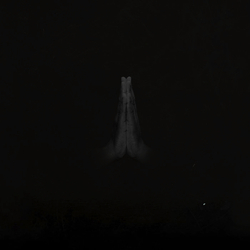 4. Sault: Untitled (Rise)Sault, the enigmatic British group that surprise-dropped the riveting, socially conscious soul album Untitled (Black Is) released another new album titled Untitled (Rise). Last year also saw them release two albums, with the first in early summer and the second at the end of summer, and they’ve continued that pattern in 2020. The group is a collaboration between Dean Josiah Cover (aka Inflo), Melisa Young (aka Kid Sister) and Cleopatra Nikolic (aka Cleo Sol), and their music spans soul, funk, Afrobeat and R&B. While Untitled (Black Is) was more pointed about the struggles of the Black experience, Untitled (Rise) shows the carefree, independent and celebratory sides of that existence. The rhythms are more central and vigorous, and there’s a relaxing flow to these songs, though there are still moments of powerful spoken-word speeches and stomps on tracks like “Rise Intently” and “The Beginning & the End.” With this album, Sault have proven their exceptional dynamism, talent and spirit once again as they’ve delivered another essential cultural staple. —Lizzie Manno
4. Sault: Untitled (Rise)Sault, the enigmatic British group that surprise-dropped the riveting, socially conscious soul album Untitled (Black Is) released another new album titled Untitled (Rise). Last year also saw them release two albums, with the first in early summer and the second at the end of summer, and they’ve continued that pattern in 2020. The group is a collaboration between Dean Josiah Cover (aka Inflo), Melisa Young (aka Kid Sister) and Cleopatra Nikolic (aka Cleo Sol), and their music spans soul, funk, Afrobeat and R&B. While Untitled (Black Is) was more pointed about the struggles of the Black experience, Untitled (Rise) shows the carefree, independent and celebratory sides of that existence. The rhythms are more central and vigorous, and there’s a relaxing flow to these songs, though there are still moments of powerful spoken-word speeches and stomps on tracks like “Rise Intently” and “The Beginning & the End.” With this album, Sault have proven their exceptional dynamism, talent and spirit once again as they’ve delivered another essential cultural staple. —Lizzie Manno
 3. Run the Jewels: RTJ4At this time, political-rap heroes Run the Jewels and Rage Against the Machine were supposed to be on taking a break in the middle of their co-headlining international tour, but it was postponed due to COVID-19. In the midst of economic turmoil, a pandemic and altogether uncertainty, the tragic death of Minneapolis’ George Floyd sparked nationwide protests against police violence. “Fuck it, why wait.” was the cathartic boom written in neon-pink letters that signaled RTJ4’s arrival two days early, for free, in standard Run the Jewels fashion. Both the album’s accessibility and message are intended to highlight the ongoing revolution, which is clearly a cause the duo readily supports. RTJ4 serves as a loving ode to the old school more so than on any of their other albums, with a Greg Nice and DJ Premier feature, Killer Mike’s references to 2 Live Crew on “never look back” (“Uncle Luke don’t stop, get it get it Magic City”), and a brilliantly manipulated Gang of Four sample on “the ground below.” This hodgepodge of styles and references emphasize what their music is all about. El-P’s New York roots meshed with Killer Mike’s Dirty South origins seem strange at first, but it’s their shared love of hip-hop’s history and politics that make the duo unlike anyone else. They treat hip-hop as a universal and political language that transcends identity, relying on the mechanics of the genre as a vehicle to tell meaningful stories, even if it means driving that vehicle directly into the building. RTJ4 is the perfect soundtrack to the revolution, especially the one not televised. —Jade Gomez
3. Run the Jewels: RTJ4At this time, political-rap heroes Run the Jewels and Rage Against the Machine were supposed to be on taking a break in the middle of their co-headlining international tour, but it was postponed due to COVID-19. In the midst of economic turmoil, a pandemic and altogether uncertainty, the tragic death of Minneapolis’ George Floyd sparked nationwide protests against police violence. “Fuck it, why wait.” was the cathartic boom written in neon-pink letters that signaled RTJ4’s arrival two days early, for free, in standard Run the Jewels fashion. Both the album’s accessibility and message are intended to highlight the ongoing revolution, which is clearly a cause the duo readily supports. RTJ4 serves as a loving ode to the old school more so than on any of their other albums, with a Greg Nice and DJ Premier feature, Killer Mike’s references to 2 Live Crew on “never look back” (“Uncle Luke don’t stop, get it get it Magic City”), and a brilliantly manipulated Gang of Four sample on “the ground below.” This hodgepodge of styles and references emphasize what their music is all about. El-P’s New York roots meshed with Killer Mike’s Dirty South origins seem strange at first, but it’s their shared love of hip-hop’s history and politics that make the duo unlike anyone else. They treat hip-hop as a universal and political language that transcends identity, relying on the mechanics of the genre as a vehicle to tell meaningful stories, even if it means driving that vehicle directly into the building. RTJ4 is the perfect soundtrack to the revolution, especially the one not televised. —Jade Gomez
 2. Waxahatchee: Saint CloudIn 2017, Waxahatchee’s Katie Crutchfeld quite literally blew the music world away. Her record Out in the Storm, which we named one of the best albums of that year, displayed a whole new side of the singer. Gone were the fortified bedroom pop of 2015’s Ivy Tripp, the rock-tinged freak-folk musings of her 2013 stunner Cerulean Salt and the brainy lo-fi recordings of her 2012 debut American Weekend. Out in the Storm sounds like its title suggests: loud, windy, chaotic and emotionally intense—a tried-and-true breakup album and a throwback to Crutchfield’s punk roots. If Out in the Storm was a tornado of sound and emotion, Saint Cloud, Crutchfield’s fifth album under the Waxahatchee alias (released Friday, March 27 on Merge Records) is the calm that comes afterwards. In some ways, it possesses little pieces of all the musical lives Crutchfield has lived before: punk-y vocals à la her once-upon-a-time rock band with Allison, P.S. Eliot; searing, Dylan-esque vocal delivery; chiming guitars straight off Out in the Storm; pastoral folk not unlike that of her 2018 EP Great Thunder. The songwriting remains impeccable. Within 10 seconds, you know—without a doubt—it’s a Waxahatchee album. Yet it’s different from anything she’s ever released before. Saint Cloud is Crutchfield’s country/Americana record. It runs on twang, jangle, truth and wide-open spaces; on the album cover, Crutchfield, dressed in a billowy baby-blue frock, sprawls across an old Ford truck bearing a license plate from her native Alabama. “Can’t Do Much,” a single released ahead of the record, possesses that old-time lilt and a head-over-heels chorus that sounds like something Lucinda Williams may have spat out on Essence. Saint Cloud is a whole new world. —Ellen Johnson
2. Waxahatchee: Saint CloudIn 2017, Waxahatchee’s Katie Crutchfeld quite literally blew the music world away. Her record Out in the Storm, which we named one of the best albums of that year, displayed a whole new side of the singer. Gone were the fortified bedroom pop of 2015’s Ivy Tripp, the rock-tinged freak-folk musings of her 2013 stunner Cerulean Salt and the brainy lo-fi recordings of her 2012 debut American Weekend. Out in the Storm sounds like its title suggests: loud, windy, chaotic and emotionally intense—a tried-and-true breakup album and a throwback to Crutchfield’s punk roots. If Out in the Storm was a tornado of sound and emotion, Saint Cloud, Crutchfield’s fifth album under the Waxahatchee alias (released Friday, March 27 on Merge Records) is the calm that comes afterwards. In some ways, it possesses little pieces of all the musical lives Crutchfield has lived before: punk-y vocals à la her once-upon-a-time rock band with Allison, P.S. Eliot; searing, Dylan-esque vocal delivery; chiming guitars straight off Out in the Storm; pastoral folk not unlike that of her 2018 EP Great Thunder. The songwriting remains impeccable. Within 10 seconds, you know—without a doubt—it’s a Waxahatchee album. Yet it’s different from anything she’s ever released before. Saint Cloud is Crutchfield’s country/Americana record. It runs on twang, jangle, truth and wide-open spaces; on the album cover, Crutchfield, dressed in a billowy baby-blue frock, sprawls across an old Ford truck bearing a license plate from her native Alabama. “Can’t Do Much,” a single released ahead of the record, possesses that old-time lilt and a head-over-heels chorus that sounds like something Lucinda Williams may have spat out on Essence. Saint Cloud is a whole new world. —Ellen Johnson
 1. Fiona Apple: Fetch the Bolt CuttersFiona Apple engages our minds like no one else. Like every record before it, her latest album Fetch the Bolt Cutters taps into both the repulsive and the revolutionary. Apple has never been one to deliver approachable melodies or catchy choruses—she repeatedly serves us the abnormal, in all its twisted glory, with minor chords and off-kilter rhythms, often constructed with everyday objects rather than musical instruments. As a woman who lives mostly secluded from society and releases music so rarely, she’s frequently the object of speculation and even sexualization (see: the late ’90s). She doesn’t like to do what is expected of her. She’s said as much. So it’s funny that Fetch the Bolt Cutters is exactly what so many expected it to be: brilliant. In a surprise to probably no one, Apple is now five for five. Over the last 25 years, she has made five albums that have all—in due time—ascended to holy text status, even if it took some longer than others to come around to her genius. Her most recent, the staggeringly good The Idler Wheel… arrived in 2012. Before that: Extraordinary Machine, in 2005. But Apple isn’t just sitting on these songs during the long gaps between albums; she’s buffing them to perfection. Fetch the Bolt Cutters is finally here, and it’s another miraculous case of bottled lightning. Listening to Fiona Apple is often like bearing witness to a prophet speaking in tongues. It can be difficult, at times, to make out what exactly she’s getting at in any given verse, but there’s an overwhelming sensation that what she’s singing is vastly important. In Fetch the Bolt Cutters’ case, these psalms beam clearer than ever before. —Ellen Johnson
1. Fiona Apple: Fetch the Bolt CuttersFiona Apple engages our minds like no one else. Like every record before it, her latest album Fetch the Bolt Cutters taps into both the repulsive and the revolutionary. Apple has never been one to deliver approachable melodies or catchy choruses—she repeatedly serves us the abnormal, in all its twisted glory, with minor chords and off-kilter rhythms, often constructed with everyday objects rather than musical instruments. As a woman who lives mostly secluded from society and releases music so rarely, she’s frequently the object of speculation and even sexualization (see: the late ’90s). She doesn’t like to do what is expected of her. She’s said as much. So it’s funny that Fetch the Bolt Cutters is exactly what so many expected it to be: brilliant. In a surprise to probably no one, Apple is now five for five. Over the last 25 years, she has made five albums that have all—in due time—ascended to holy text status, even if it took some longer than others to come around to her genius. Her most recent, the staggeringly good The Idler Wheel… arrived in 2012. Before that: Extraordinary Machine, in 2005. But Apple isn’t just sitting on these songs during the long gaps between albums; she’s buffing them to perfection. Fetch the Bolt Cutters is finally here, and it’s another miraculous case of bottled lightning. Listening to Fiona Apple is often like bearing witness to a prophet speaking in tongues. It can be difficult, at times, to make out what exactly she’s getting at in any given verse, but there’s an overwhelming sensation that what she’s singing is vastly important. In Fetch the Bolt Cutters’ case, these psalms beam clearer than ever before. —Ellen Johnson
Listen to Paste’s Best Albums of 2020 playlist on Spotify here.